Music is the universal language
“Glory to God in the highest heaven, and on earth peace to those on whom his favor rests.” - Luke 2:14
General Interest
Song Premiere: Courtney Hartman’s “Everything at Once”
The Fretboard Journal is proud to share a first listen of Courtney Hartman’s “Everything at Once,” from her forthcoming album With You (out November 14, 2025).
The record, her first since 2021’s Glade, features Hartman cowriting with fellow moms and artists, including Tift Merritt, Sarah Siskind, Emily Frantz of Watchhouse.
Support With You via Courtney’s Kickstarter or follow her here.
Above photo: Michelle Bennett
The post Song Premiere: Courtney Hartman’s “Everything at Once” first appeared on Fretboard Journal.
More Unusual First Guitars That Rock Stars Started Their Careers On

Most of us in the guitar-playing community started out our musical journey on some sort of cheap brand of guitar or perhaps a hand-me-down guitar with action that is way too high, rusty strings, and worn-out frets. In this article, we’ll take a look at some of the guitars that many of our rock idols started out on. I took a look at some of them a while back, and as with this time they were generally not top-of-the-line professional instruments…
Jimmy Page
Long before Jimmy Page became the legend we know him as, he started his career like any of us do, with a cheap guitar. His first-ever guitar was an acoustic that was found in a home that Page’s family moved into — presumably left behind by the previous family. It wasn’t long before Page’s family realized that he was invested in learning to play guitar, so they bought him a Hofner acoustic before upgrading once again to his first electric guitar – a 1958 Resonet Grazioso Futurama.
The Futurama was a unique and simple guitar manufactured for a short time in the late 1950s by the Drevokov company in Czechoslovakia. The body somewhat resembled a Stratocaster shape with a unique vibrato system and individual pickup switches rather than the sliding selector switch on a standard Stratocaster.
It’s possible that Page would have started his electric career on a Stratocaster if not for the trade embargo on American goods, including guitars, that the British government put into place following World War II. That embargo ended in 1959. An example of how world politics can have a hand in shaping the development of musicians.
Kurt Cobain
There are some conflicting stories regarding Kurt Cobain’s first guitar, but it is most commonly believed to have been a left-handed Univox Hi-Flier. Allegedly, he received it as a gift from his uncle, Chuck Fradenburg, on his 14th birthday in 1981, when his uncle gave him the choice of a used guitar or a bicycle – thankfully for an entire generation, he chose the guitar.
Cobain would go on to own and use several Univox Hi-Fliers during his years playing with Nirvana, including in the studio for the recording of the band’s debut album Bleach but by the time they recorded that album in 1988, Univox had gone out of business the previous year. The Hi-Flier, specifically, was loosely based on the Mosrite shape. Univox guitars were produced by Japanese manufacturer Matsumoku, who were responsible for making a lot of guitars on the cheaper end of the spectrum (yet still surprisingly high in quality for the price) for brands like Epiphone and Aria.
Eddie Van Halen
Eddie Van Halen’s first guitar, purchased as a child from a Sears and Roebuck catalog, was a Teisco Del Rey. He played the guitar in his elementary school band, The Broken Combs, developing a lot of his guitar playing basics. Teisco guitars were built in Japan from 1948 until 1967. It remained defunct until 2018 when it was relaunched by BandLab Technologies (the same parent company that publishes Guitar.com). The Teisco Del Rey was only made between 1964 and 1967 for the American Market.
There were several iterations of the Del Ray model, and Eddie Van Halen has said in interviews that he had four pickups (he also said it had three pickups, but we have photographs of him, as a kid, holding a four-pickup model), which means that it was a WG-4L sub-model. Those usually had a vibrato system and switches for each individual pickup. They were fairly cheap but were nonetheless a fine instrument for a beginner. There were many young men and women who began their careers on the very same guitar. You can find them available for relatively cheap on the used market today.
Jimi Hendrix
Jimi Hendrix, like so many of us, started out on an acoustic guitar that had a warped neck and high action. But nevertheless, young Jimi persevered and after about three months, he realized that he needed an electric guitar, so in mid-1959, his father bought him a white Supro Ozark 1560 S. Hendrix played that guitar in his first band (name unknown), who allegedly fired him for showing off at his first gig. He played the Ozark in his first proper band, the Rocking Kings, and the guitar was stolen when he left it at the venue overnight.
Supro is a brand owned by Valco that made musical instruments in the Chicago between 1935 and 1968. They were a budget brand of National Dobro and the guitars were affordable. Supro is probably best known for making high-end amplifiers. They were actually the first company to build a combo amplifier with reverb. Supro amps were a favorite of Jimmy Page, who used it for the solo on Stairway To Heaven. But Supro guitars were far less revered by professional musicians. The Supro brand was reintroduced in 2013 and they continue to make guitars, amps and effects.
Stevie Ray Vaughan
Stevie Ray Vaughan is the only player in this article whose first guitar was a Fender or Gibson. It was a 1957 Gibson ES-125T 3/4 Sunburst Archtop that he received from his brother, Jimmie, in 1963, who had been gifted it by their father. The ES-125T was introduced to the Gibson lineup in 1941 as an entry-level guitar that had several iterations over the years, but the ES-125T was a non-cutaway with a single P-90 pickup in the neck position.
The ES-125T was not a cheap, obscure guitar like others on this list. It had been used by BB King in the early 1950s. Many other guitarists after Stevie Ray Vaughn also used the model at some point in their careers such as Tracy Chapman, Marc Ribot, George Thorogood, and Thom Yorke. The model was discontinued in 1970.
Vaughan used this guitar when he joined his first band, the Chantones, in 1965. He used this guitar until his brother gifted him another guitar, a 1951 Fender Broadcaster (Nocaster) that he dubbed “Jimbo”. In 2008 that guitar sold at auction for a quarter of a million dollars. As for the ES-125T, we aren’t sure what became of it. It was sold at auction in 2021 by Heritage Auctions, but it was not made public if the guitar sold, who bought it, or if it remains in the hands of the original seller. Another musical mystery is afoot.
The post More Unusual First Guitars That Rock Stars Started Their Careers On appeared first on Guitar.com | All Things Guitar.
Finally - Gamechanger Audio's MOTOR Pedal
Wolfgang Van Halen Faces the Fire
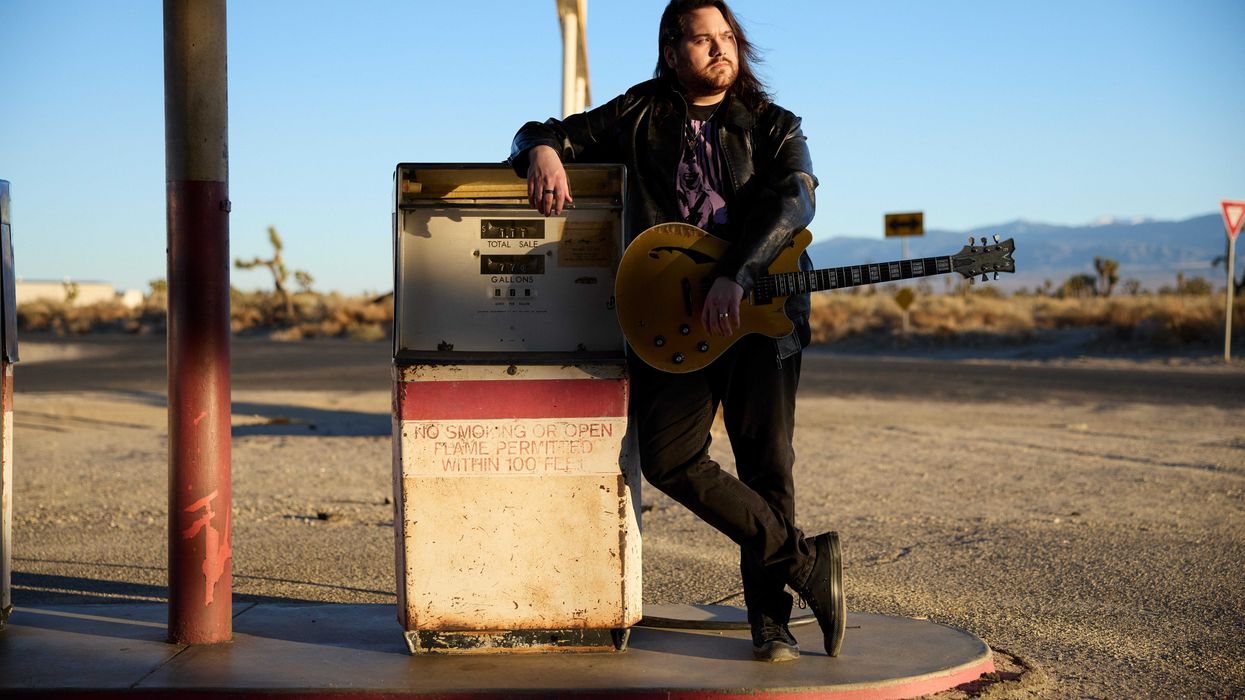
For many, Wolfgang Van Halen will always be defined by his famous origin story. The son of guitar legend Eddie Van Halen and actress Valerie Bertinelli, he first banged out rhythms on stacks of magazines before moving to real drums. As a teenager, he unexpectedly became the spark for Van Halen’s mid-2000s reunion with David Lee Roth—a run that brought long-awaited, sold-out tours, a 2012 studio album, and a 2015 live release. The band’s time, however, ended when Eddie passed away in October 2020 after a long battle with cancer. In the years between their final tour and his father’s death, Wolf had quietly been crafting a solo album, which he set aside to spend more time with Eddie.
In time, Van Halen returned to the music he’d quietly begun before his father’s passing. In late 2020, he unveiled his debut single, “The Distance,” a heartfelt tribute to Eddie that introduced his Mammoth WVH project to the world. The album that followed was very much his own—he wrote the songs, sang, and played all the instruments. From there, he quickly established himself on his own terms. Four years later, he was riding high on the strength of two acclaimed albums, with his sophomore effort, Mammoth II, building on the promise of his lauded debut. Throughout that cycle, Wolfgang did it his way—opening for Metallica, Foo Fighters, Creed, and Slash featuring Myles Kennedy and the Conspirators, while also packing venues nationwide on his first proper U.S. headlining tour.
While things couldn’t have been going any better professionally, Van Halen slowly felt the angst of this budding success catching up to him. On a September 2024 flight to Mexico to close out his stadium run with Metallica, the multi-instrumentalist felt a strange pain suddenly take over his body. Then his vision started to blur, and he felt like he was going to vomit. He turned to his uncle, Patrick Bertinelli, one of the “trusted people” who goes on tour with him, swiped at his leg, and told him he didn’t feel well in the manner of a seven-year-old who had a tummy ache. Cold and drenched in sweat, Van Halen’s uncle put his hand on his head and said, “Yeah, you don’t feel good, man.” After what felt like hours in the airplane bathroom—but was really about 25 minutes—the sensation finally passed.
What was really going on was the culmination of nerves that ended up being all-encompassing. With Mexico City’s altitude nearing 7,000 feet, and having never set foot in the city before, Van Halen was worried about how he’d be able to sing in high elevation. It was also the final show of the Metallica jaunt, so he wanted to wrap things on a positive note. Add to that a lack of sleep before the flight, and thoughts spun around in his head until he became physically sick.
Today, sitting backstage in Rhode Island ahead of another arena-opening date for Creed, the road-weary Van Halen can’t help but chuckle at that confluence of events.
“It was my first panic attack,” Van Halen says. “I never felt my body betray itself so hard. On paper, I’m a very anxious person, but that was a whole other level.”
For Van Halen, the angst of that moment proved to be a harbinger of the stresses that surrounded the making of his new third studio album.
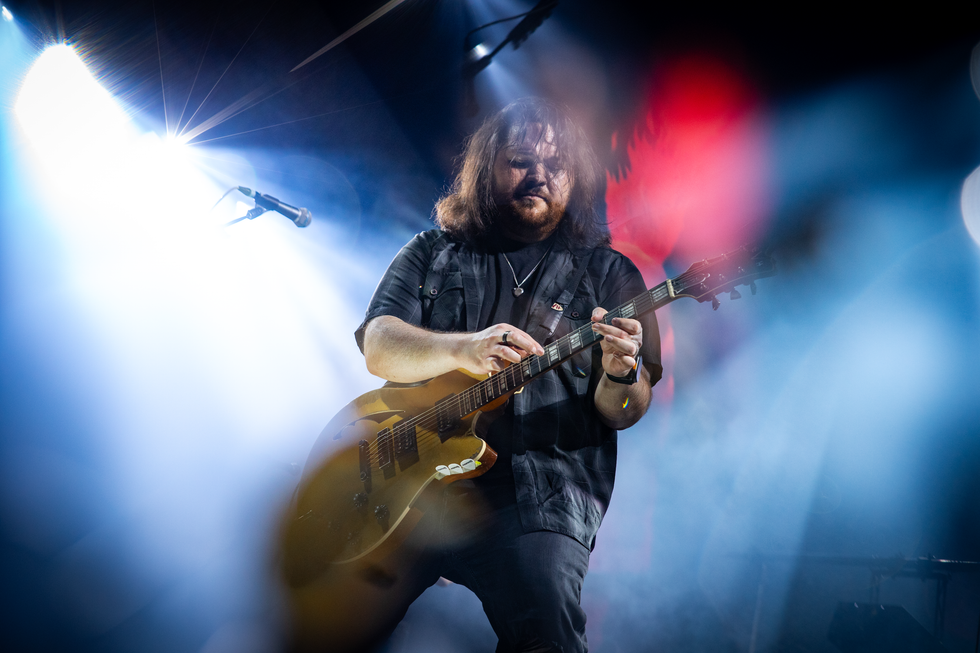
As he got to work on what was to become The End, Van Halen faced challenges beyond his control. For the better part of the past few years, the 34-year-old, along with longtime Van Halen family confidant and guitar tech Matt Bruck, painstakingly rebuilt 5150, the Los Angeles-area studio his father constructed and where every Van Halen album since 1984 had been recorded. The renovation was completed between Mammoth albums, making the recording process this time around far smoother and streamlining pre-production considerably.
While working on pre-production following the Metallica dates, Van Halen decided to make some changes, including rechristening the project Mammoth after securing the trademark to the name. Usually, Van Halen cooked up ideas on his laptop to hear them and see how they’d come together. In the rebuilt studio, fully operational to his standards, he could play a riff, run to the drums to track it, then hop over to the bass. This efficient setup allowed Van Halen, once again teaming with frequent collaborator Michael “Elvis” Baskette, to work much more smoothly. And, just like prior Mammoth albums, he played every instrument himself, calling it his “purest form of artistic expression.”
“When I was making Logic demos, the process of it bogged down the creativity,” he says. “It would take too long for me to get the drums that I wanted, so that I would give up, and the creativity would be lost.”
Now, armed with 5150 set up to his standards, the album came together quickly. Drawing from several unfinished ideas he’d carried over from previous writing sessions, Van Halen put a “fresh coat of paint” on them, setting off a creative chain reaction from which most of the ideas for The End emerged. He spent the next few months recording before heading back out on the road to play arenas with Creed.
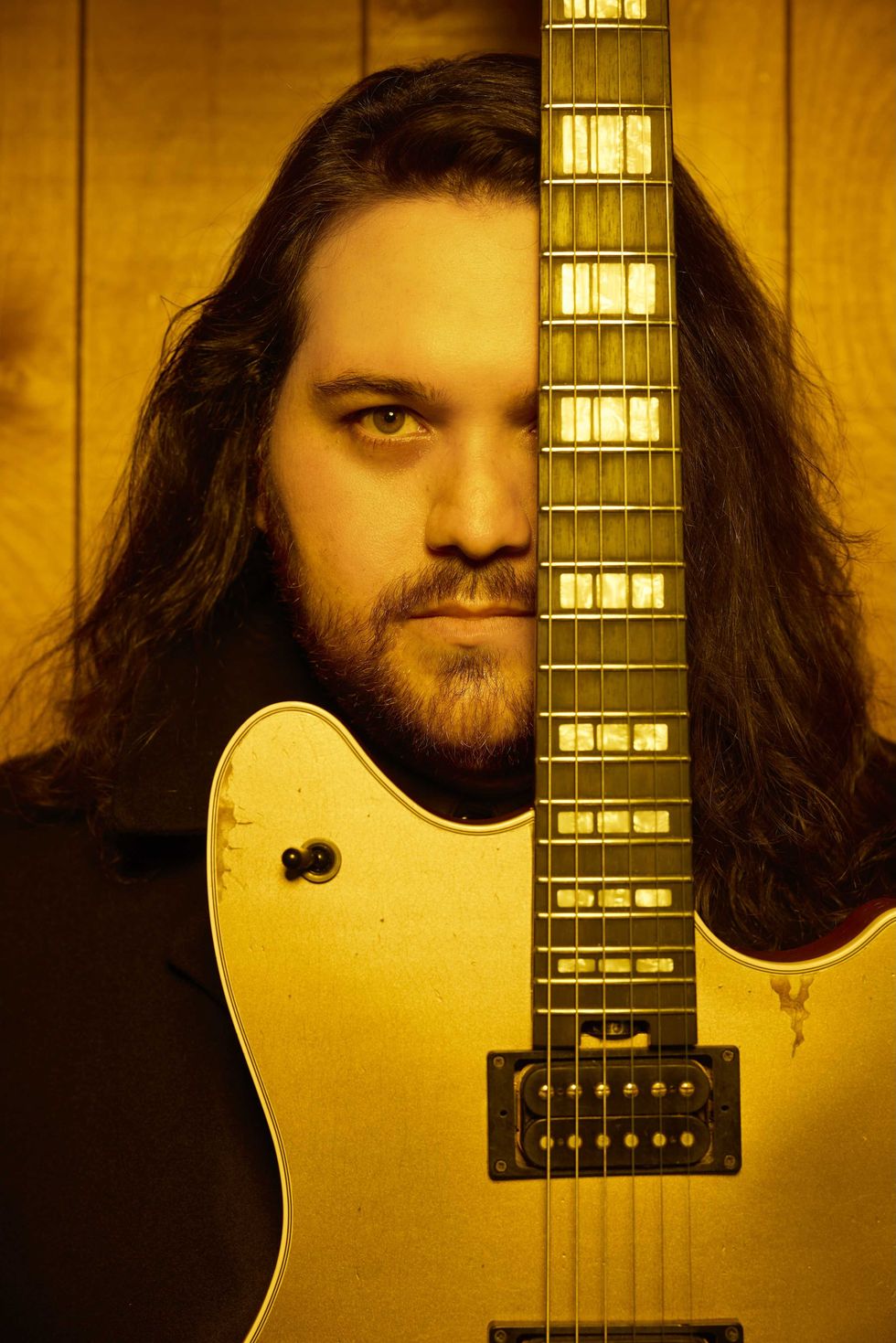
“In comparison to how I was on the first album, which was very reserved, guitar-wise, I’m starting to worry less about what people think and what people say.”
In January, though, problems arose. Van Halen wasn’t immune to the anxiety that the wildfires destroying parts of Los Angeles caused among the city’s residents. Their proximity to 5150 was never far from his mind, looming as a menacing presence that threatened both the Van Halen home and, in turn, his studio. This tension, set against the backdrop of working on new music, underscored the lurking horrors of Mother Nature. “That’s where most of the anxious, doomsday energy in the lyrics comes from,” he says. “I couldn’t focus on my things.”
With not just his gear, but also his father’s, sitting in 5150, Van Halen knew how important it was to keep everything safe. He recalls a three-week period when Eddie’s iconic Frankenstein guitar sat in the backseat of his car, ready to go in case he had to evacuate with little time to spare.
“I thought, I’ll have Frankenstein and my wife, and we’re good,” he says. “And then we had a U-Haul filled with whatever else we felt was worth saving, which was very tough. Luckily, it didn’t come to that, but it was a traumatizing time we’re still working through.”
That tense energy from this period—the panic attack on top of the fear of losing his father’s remaining physical possessions—is reflected throughout The End. Lyrically, Mammoth songs have always been Van Halen’s outlet for processing anxiety, even when the exuberant melodies suggest otherwise. This album was no different.
Songs like the Foo Fighters-inspired “I Really Wanna” (where he addresses standing up to the bullies he’s faced over the years … and there’s a particular pointed line that sharp-eared listeners will catch) and “One of a Kind”—two of his favorites—came together smoothly thanks to the streamlined pre-production process. In fact, he says he wouldn’t have taken a chance on the “wacky” tempo changes in “One of a Kind” without it.
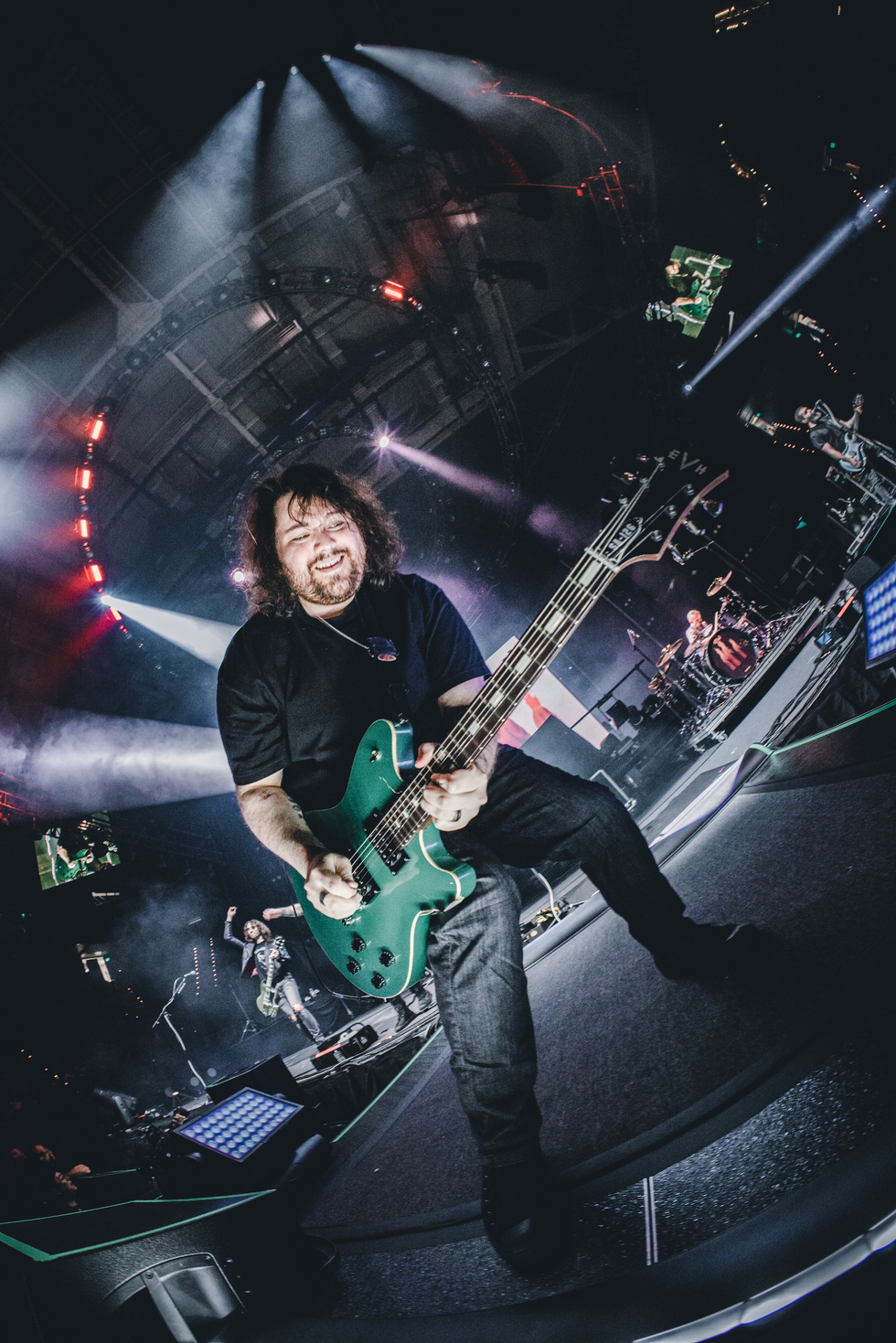
This didn’t mean the work was easy. Van Halen pushed himself as both a musician and vocalist, and laying down his vocals proved to be the toughest challenge yet. “I was uncomfortable a lot of the time,” he says of the process. But stepping out of his comfort zone—for example, on the bluesy “Better Off”—forced him to grow as a singer.
The End isn’t what its title implies. Instead, after finding his way on his first few albums, it’s a cohesive body of work that shows the depth and growth of Van Halen’s songwriting. Look no further than the title track, which opens with a tapped sequence reminiscent of you-know-who. (“It was fun to have that ear-catching moment,” he says.) It’s an idea Van Halen had been sitting for nearly a decade, just waiting for the perfect song where it would finally fit.
“I always thought it was a little over the top,” Van Halen says. “I thought of it as a challenge: ‘How can you make this the centerpiece of an idea, but still make a cohesive song around it?’ That was the songwriting challenge.”
It’s one that he aced. Throughout the song’s fun, in-your-face three-and-a-half minutes (listen closely, and there’s a nod to “Source of Infection” from OU812), Van Halen shreds with the confidence of a guitar wizard and the ease of a natural on what stands as The End’s leanest, meanest, most action-packed song. And speaking of action-packed, the accompanying video was directed by none other than legendary “Mariachi-style” filmmaker Robert Rodriguez.
A longtime fan of Rodriguez (Van Halen cites From Dusk to Dawn and Spy Kids as favorites), the two met at a show on the Mammoth II tour in the director’s hometown of Austin. The thought of Rodriguez directing a Mammoth video felt like a “pie-in-the-sky dream.” After playing demos of the new material for the filmmaker, Van Halen worked up the courage to ask Rodriguez if he’d be up for it, and he was intrigued. When Van Halen sent him the completed version of “The End,” Rodriguez came on board, bringing effects guru Greg Nicotero along with him.
“I never felt my body betray itself so hard. On paper, I’m a very anxious person, but that was a whole other level.”
“The amount of talent being utilized for such a silly thing just blew my mind,” Van Halen says of the zombie-themed video, which includes cameos from actor Danny Trejo, Slash, Myles Kennedy, and Valerie Bertinelli. “It was so fun … it was happy, with smiles throughout the whole shoot.”
At its core, The End is a balanced, guitar-driven album. Although Van Halen still considers himself a drummer—the first instrument he ever played—his guitar work has matured, and he sounds more confident than ever. There are flashes of virtuosity, as on the title track, but overall, he focuses on what best serves each composition.
“In comparison to how I was on the first album, which was very reserved, guitar-wise, I’m starting to worry less about what people think and what people say,” Van Halen explains. While The End, he says, “may be a bit reserved compared to Mammoth II, it feels more balanced this time around. It has a rawer vibe, and I was happy to keep the rough edges for people to feel like they’re in the studio with me.”
“There are a lot of expectations around me—so many preconceived ideas that it feels impossible for anyone to have a neutral opinion.”
With The End, Van Halen takes a reflective look inside. After years of having millions of fans watch him since he was barely able to drive, he’s finally comfortable with his place in music. So much so that it’s allowed him the vision to start looking further down the road. While recording The End was fruitful, four remaining song ideas weren’t fleshed out. Those could serve as the foundation to a fourth album, one that Van Halen notes that even without writing new material, he’d have plenty in the bank to draw from. By merging the old and new, he can turn a simple idea into something that feels more alive—a mantra he carries into every Mammoth session.
“There are a lot of expectations around me—so many preconceived ideas that it feels impossible for anyone to have a neutral opinion,” he says. “From the beginning, I’ve tried to stand out as my own person, without all of the bullshit that comes with the name and the controversies and everything that's come before me. It's just nice to be able to be judged for the music itself, rather than what people think or say about me.”
When reminded that some of his peers—musicians he admired as a young player—are now among rock’s biggest names, Van Halen quickly retorts that most people still see him as a kid. Some, he jokes, will never see him as anything more than that.
“That’s the tough thing!” he says with a laugh. “I feel like I'm gonna be a kid until I’m an old man. I’m never going to be just a guy. Like, I just want to be a guy.”Wolfgang Van Halen’s Gear
Guitars and Basses
EVH SA-126 goldtop (SA-126 Tim Shaw pickups)
EVH SA-126 Pink finish (SA-126 Tim Shaw pickups)
Prototype Wolfgang 4-string
Amp
EVH 5150III 50 Watt (6L6) (“NOEL”) w/ EVH 5150III 4x12 cabinet
Effects
Dunlop MXR EVH Phase 90
Dunlop MXR EVH Flanger
Dunlop Cry Baby EVH wah
Dunlop MXR Micro Flanger
Dunlop MXR Micro Chorus
Dunlop MXR Sub Machine
Dunlop MXR Uni-VibeDunlop MXR Uni-Vibe
ZVEX Woolly Mammoth Vexter
Electro-Harmonix Micro Synthesizer (vintage)
Electro-Harmonix Small Clone
EarthQuaker Devices Hoof Reaper
Ceriatone Centura
DigiTech DOD Envelope Filter 440
Boss RE-202 Space Echo
Boss OC-3 Super Octave
Boss RV-6 Reverb
Boss CE-5 Chorus Ensemble
Guild Brian May boost
Strings, Picks, and Accessories
Dunlop Max-Grip .60mm
EVH .010–.049
EVH cables
Crazy Tube Circuits Announces Mirage JR
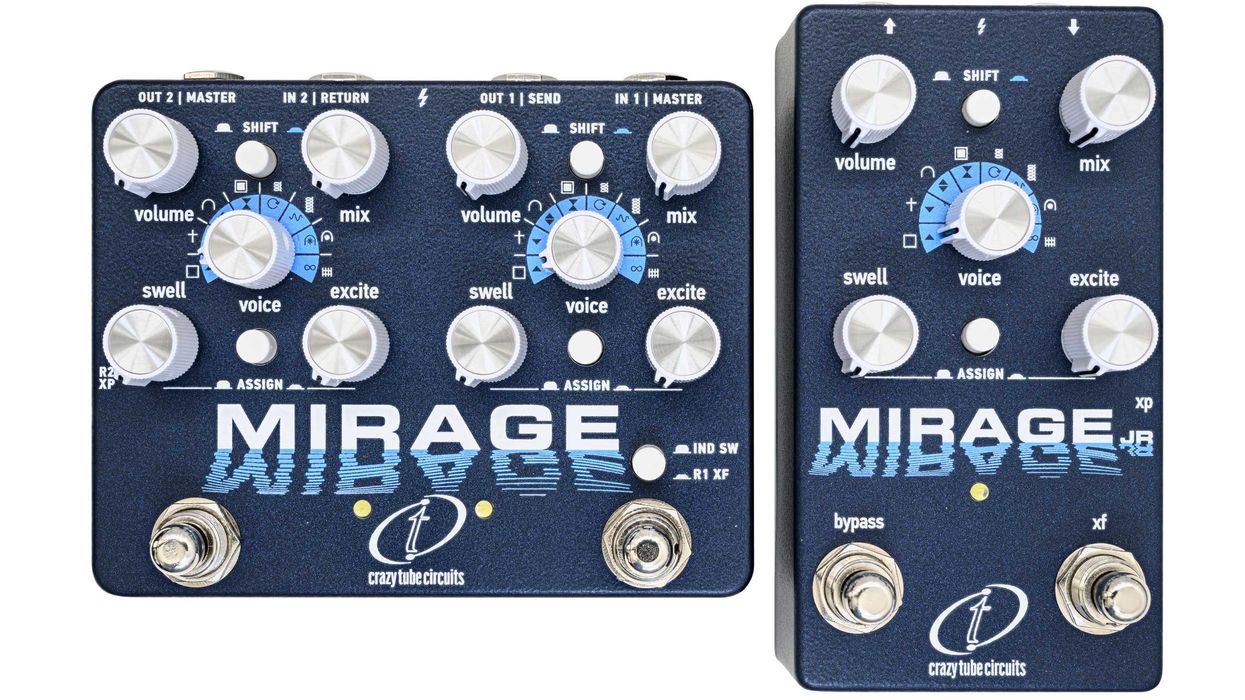
Crazy Tube Circuits are proud to introduce the Mirage JR, a streamlined version of the Mirage dual-engine reverb.
Engineered with the same studio-grade processing power as its big brother, Mirage JR delivers the lush, detailed soundscapes in a more compact, pedalboard-friendly design. Featuring a curated selection of 16 immersive reverb algorithms that cover everything from authentic room and spring emulations to expansive ambient textures.
Mirage JR is a compact reverb powerhouse that delivers all the creative range of its big sibling in a streamlined, single-engine mono format. It offers the same studio grade processing, intuitive layout, and algorithm selection.
Built for guitarists, bassists, synth players, and ambient creators who want maximum sound without complexity. Whether you’re chasing vintage plate tones, cinematic shimmer, or frozen walls of reverb, Mirage JR brings it all together in one expressive unit.
The reverb engine runs any of 16 carefully crafted reverb algorithms, organized into two banks of natural, familiar spaces or modern and experimental territories. Four dedicated knobs and two expression controls enable powerful real time interactions, from expressive shimmer bursts and freeze triggers to evolving modulated textures.
Despite its compact footprint, Mirage JR gives you plenty to show off, visually, sonically, and practically. It shines as a mono front end spatial effect, but it’s equally at home in pedal switchers, synth setups, or even as a send effect in the studio, bringing the magic of the original Mirage to any rig.
Street price $249
For more information visit www.crazytubecircuits.com/mirage-jr
Spector Introduces the NS Icon Bolt-On Series
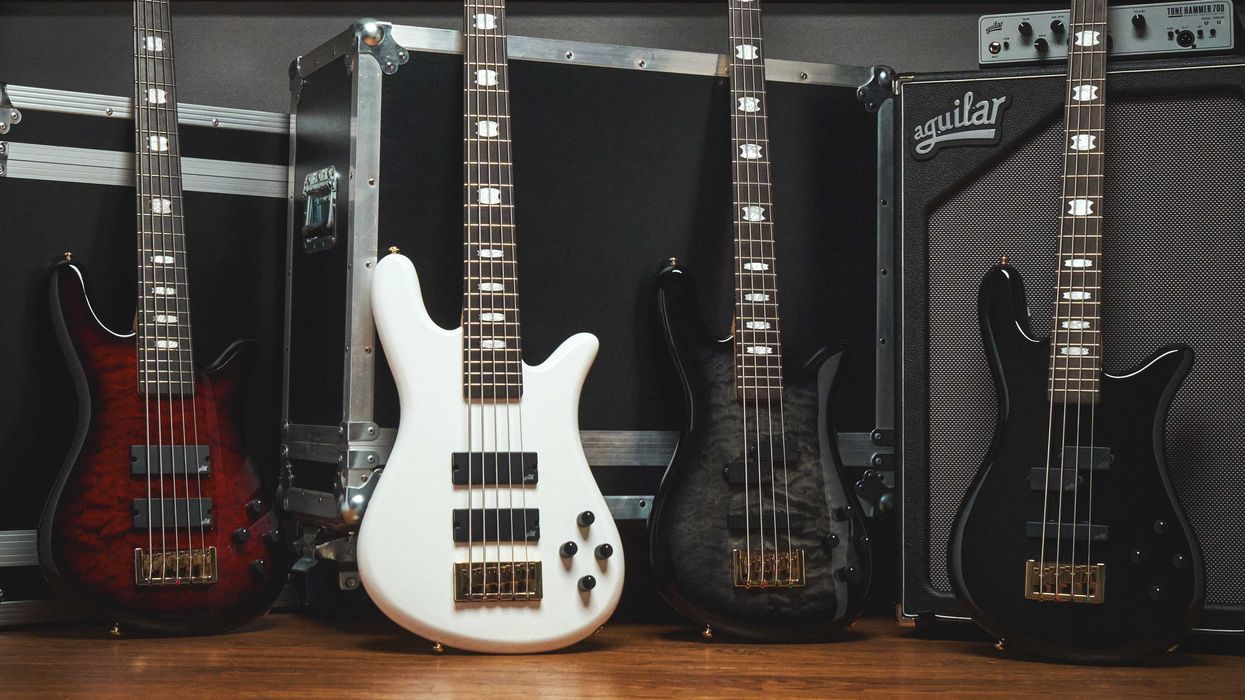
For nearly five decades, Spector has been synonymous with innovation, craftsmanship, and the unmistakable tone that has shaped the sound of modern bass. Today, Spector unveils the next evolution in the storied lineage: the NS Icon Bolt-On series.
The NS Icon Bolt-On brings the revered NS design into a bold new era. Designed by the expert luthiers at the Spector Custom Shop in Woodstock, NY, this new series captures the essence of the flagship instruments while offering a fresh take for today’s player. With its fully carved body, premium tonewoods, and professional-grade hardware, the NS Icon Bolt-On delivers the iconic Spector feel and tone in a bolt-on format.

Each NS Icon Bolt-On features a resonant Alder body paired with a bolt-on 3-piece rock maple neck and a smooth rosewood fingerboard—tonewoods that have defined Spector’s sonic signature for generations. The body’s fully curved contour ensures unmatched comfort and playability, while the neck profile, nut width, and fingerboard radius are meticulously crafted to meet the standards of our Custom Shop.
“The NS Icon Bolt-On brings the essence of Spector to more players than ever before. We took everything players have loved about USA built NS basses for nearly 50 years and combined them with a classic Bolt-On construction to achieve a playing experience that is both immediately recognizable and unique at the same time. The introduction of the NS Icon Bolt-On is the next step on our journey of bringing the best that Spector has to offer to bass players at every level.” - Wil DeYoung – Spector Custom Shop Manager
Available in both 4-string and 5-string configurations, players can choose from two solid gloss finishes: Black and White, or two stunning stain finishes: Black Cherry and Black Stain, each adorned with a highly figured quilted maple top. Gold hardware, signature Crown inlays, a polished brass nut, and a fully intonating locking bridge complete the look.
At the heart of the NS Icon Bolt-On is a custom-voiced electronics package developed in collaboration with Aguilar. The 4-string model features a Reverse P and J pickup configuration, while the 5-string boasts dual Soapbar pickups. Paired with the Aguilar OBP-2 preamp, these pickups deliver the deep, articulate lows and crystal-clear highs that define the Spector sound—now with even greater versatility.
To learn more about the NS Icon Bolt-On please visit www.spectorbass.com
Street Price: $1199.99 USD NS-4 Icon
$1299.99 USD NS-5 Icon
Levy’s New Night Life, Clairvoyant, and Holiday Strap Series

Levy’s Music has introduced two new guitar strap series designed to capture attention in the dark and tap into the mystic. The Clairvoyant Series and Night Life Series blend visual storytelling with performance-ready functionality, expanding the Levy’s collection with bold new designs for expressive players.
The Night Life Series features black leather straps embroidered with spider webs, lightning bolts, and moon-and-star motifs that glow in the dark after charging under light. Built from soft garment leather and sized for comfort during long sets, the straps are designed to deliver a showstopping look without compromising durability.
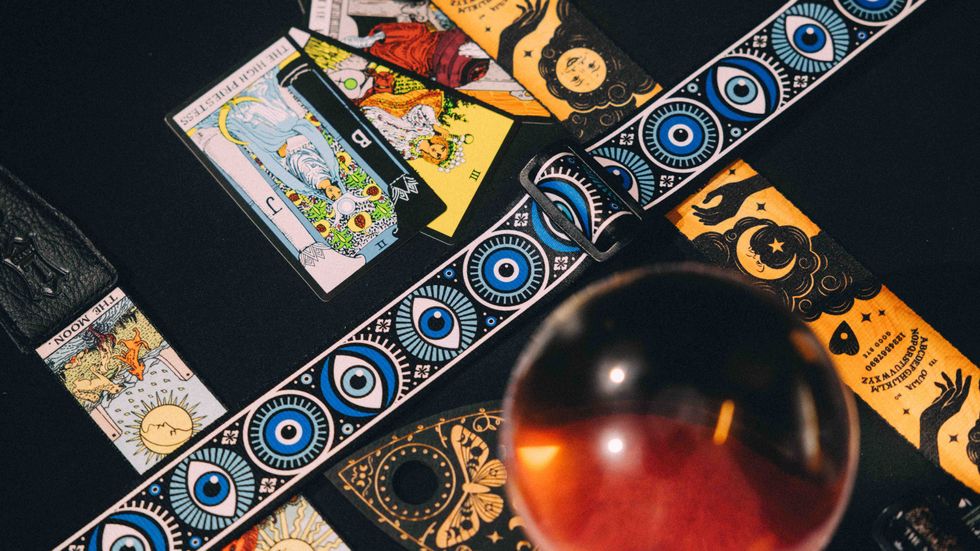
The Clairvoyant Series explores supernatural symbolism through printed poly straps inspired by tarot cards, Ouija boards, and the protective gaze of the evil eye. Each design brings an otherworldly aesthetic to the stage while offering practical features like genuine leather ends and adjustable length for versatile use. Both series are handcrafted in Nova Scotia and available now through authorized Levy’s dealers and distributors.

Levy’s is expanding its holiday-themed Christmas Strap Series with two new designs: the Plaid Christmas Strap and the Ugly Christmas Sweater Strap. Both styles join the existing seasonal lineup and bring fresh holiday personality to Levy’s’ growing collection of print straps.
Handcrafted in Nova Scotia, Canada, each strap delivers the comfort and quality Levy’s is known for while embracing playful, festive visuals. The Plaid Christmas Strap features a classic red and green tartan pattern, while the Ugly Christmas Sweater Strap leans into bold, sweater-inspired graphics that celebrate the lighter side of the season.
Both straps are constructed with standard series materials, including a polyester body and genuine leather ends, and adjust from 35.25 to 60.5 inches to suit a variety of playing styles and instruments. To learn more about Levy’s guitar straps and music accessories, visit www.levysleathers.com.
“It will never stop – thank God”: John 5 names three modern guitarists who are ensuring that the guitar will “keep evolving”

While conversations about typical guitar heroes generally tend toward the likes of Eddie Van Halen, Jimi Hendrix and Jimmy Page, there are plenty of modern players pushing the envelope.
And in a new interview with We Wreck Records, Mötley Crüe and Rob Zombie guitarist John 5 names some of the guitarists he feels are keeping the instrument exciting.
John 5 – real name John William Lowery – is quick to rattle off the names of Polyphia (guitarists Tim Henson and Scott LePage), as well as English guitarist Guthrie Govan and Animals as Leaders founder Tosin Abasi.
“It will always keep evolving. And you know what? Thank God for it,” he says [via Ultimate Guitar]. “There’s so many incredible guitar players. And even before Jimi Hendrix, we had Chet Atkins, we had Roy Clark, all these people that were just ripping it up on guitar.”
John 5 believes the widespread adoption of social media has led to the emergence of talents who would have otherwise stayed hidden.
“I love anybody that is ripping it up,” he says. “And that’s why I love Instagram so much, because you can see people all over the world. But before, you just would see people in Hollywood or hear about them in Guitar Player magazine. But now I can hear about somebody in Russia or someone in Brazil, and it’s wonderful.”
Asked to name three guitarists who have had a big impact on him personally, John 5 names some more traditional guitar heroes: “The three guitarists that changed music…
“I think where I was really taken aback and it really changed my life, I would say Eddie Van Halen definitely was that for me. And when I heard Eddie, I loved it so much, just like everybody else. He really took it to the next level.”
“Then I would say Yngwie Malmsteen, because I just love that… That ‘less is more’, I’ve never gotten that. I’ve always gotten the, ‘No, more is more.’ And that’s what I loved about Yngwie. And then I’m gonna go with even Guthrie for today, modern. I just love him so much. I just love how he creates his solos and how he plays live.”
“I appreciate great guitar players so much, and it’s so hard to find inspiration, but I’m always looking. But I really, really love when I find these certain guitar players that are super inspiring, to me and the world.”
The post “It will never stop – thank God”: John 5 names three modern guitarists who are ensuring that the guitar will “keep evolving” appeared first on Guitar.com | All Things Guitar.
Sowing in the Storm with "Ecstatic Black Metal" Band Agriculture
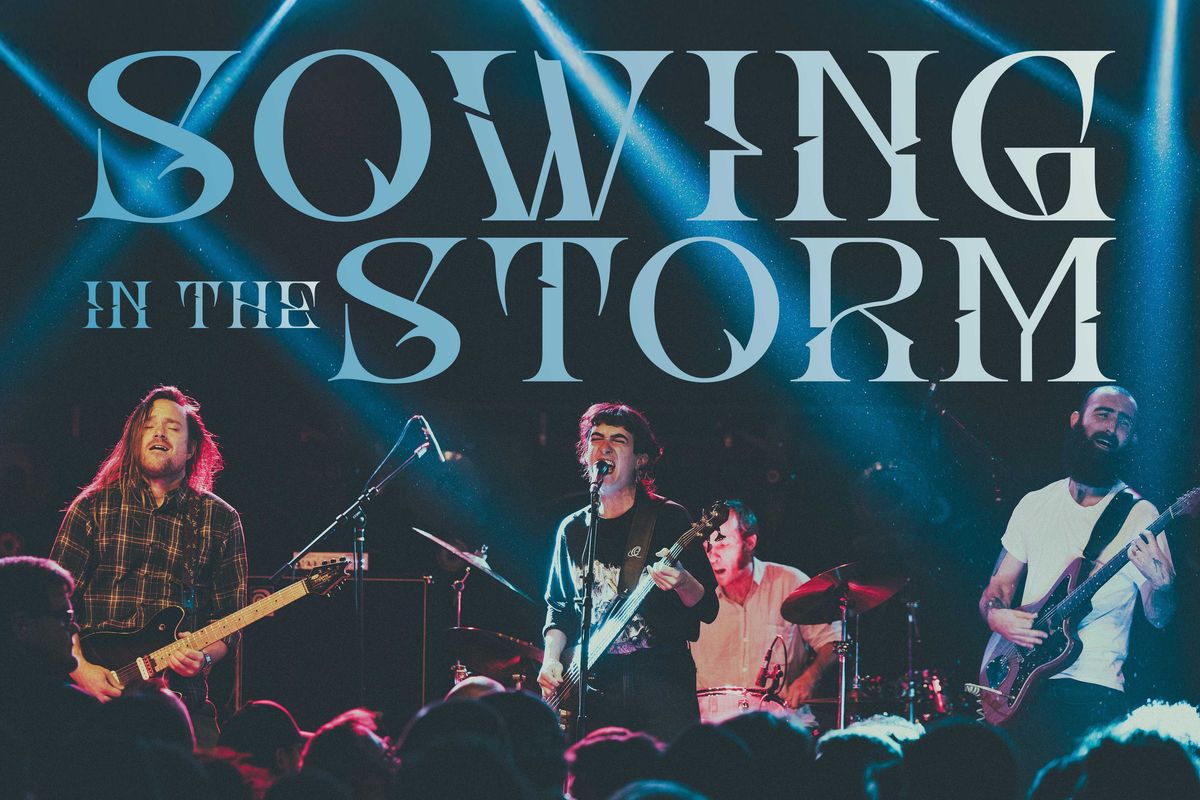
Los Angeles experimental metal band Agriculture’s new record, The Spiritual Sound, might not make sense to you at first listen. When the band sent the album to their friends, many of them were overwhelmed, if not weirded out. The band members weren’t surprised. “If I heard this record for the first time, I’d be pretty confused by it,” says guitarist and vocalist Dan Meyer.
The record opens with clanking bass strokes before a dizzying hornet’s nest of guitars and drums careens around maniacally for 20 seconds. After that, a brutal downtuned riff kicks in, accompanied by face-melting shredding. By the time the song hits the one-minute mark, and vocalist/bassist Leah B. Levinson’s dungeon-creature scream rips across the track, there have been three distinct movements. There are four more minutes, and a few more movements, to go—including a beautiful melodic reprieve that’s reprised near the song’s final moments.
It’s a thrilling shot across the bow from one of heavy music’s most fearless acts. By the end of The Spiritual Sound, Agriculture have extended their tongue-in-cheek genre designation of “ecstatic black metal” into regions like powerviolence, noise, alternative, shoegaze, and sounds that touch on folk and traditional. “Dan’s Love Song,” for example, with its nostalgic melody and simple chord progressions, could be a noise-rock interpretation of some obscure 1800s ballad. (The band lists Metallica, Slipknot, the Jesus and Mary Chain, and Bob Dylan as primary influences on the new album.) “Bodhidharma,” meanwhile, flips on its heel between headbanging metal and passages of silence, punctuated by screams, whispers, and Haug’s frozen, hulking snare and kick bursts. It also features some of Chowenhill’s most mindboggling lead guitar passages.
“The problem that I was trying to solve with my songwriting on this record was, ‘How do I write about things as they occur in my life without overly dramatizing them?’” —Leah B. Levinson
Formed in the early days of the pandemic, Agriculture—Levinson, Meyer, guitarist Richard Chowenhill, and drummer Kern Haug—have defined their sound as something that is once experimental, abrasive, and jubilant. The record title and the band’s self-determined genre designation hail from a jokey remark lobbed at them: “I love the spiritual sound of this ecstatic black metal.” The phrase, and the band, are the subject of debate on various heavy-music forums. There is a certain sense of Ursula K. Le Guin’s world-building at play in Agriculture’s music—a playfulness, curiosity, and seeming inhabitance of an alternate reality.
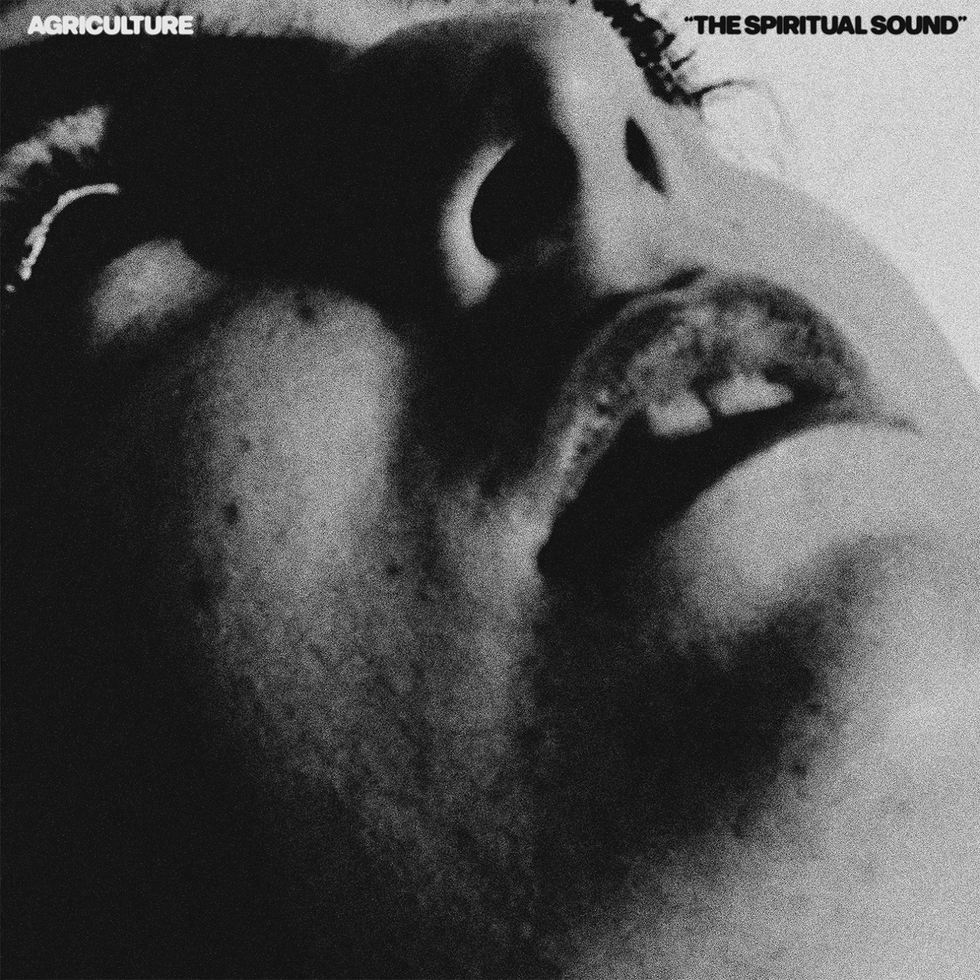
The band’s writing process for The Spiritual Sound was “unusually collaborative,” says Meyer. Songs were brought in fully formed, then torn apart and reconstituted, often with different parts. Meyer likens it to building a character at the outset of a role-playing game. “The head of this song ends up going with the body of that song,” he quips.
Once songs were solidified, they were taken to what the band calls “Richard’s kingdom”—the affectionate term for Chowenhill’s studio, where deep production began after principle tracking. That’s where vocals, overdubs, and “ear candy” were added. It’s also where plenty of sparring took place. “It is a more adventurous record,” says Levinson. “We make a lot of capital-C choices on it, and it really did require us setting aside creative differences, or at least sitting with things and being like, ‘I don’t know where this is going, I don’t like this, but I’m gonna sit with it and trust that each other has a vision.”
Chowenhill, who is trained as a composer in the classical tradition, is responsible for most of the jaw-dropping guitar theatrics on the record, influenced by shredders like Alexi Laiho and Eddie Van Halen alongside Hungarian composer György Ligeti—in particular Ligeti’s “String Quartet No. 2.” “There’s no guitars, but you can transpose those things to guitar,” he explains, naming the composition’s chromatic motion and left-hand techniques as things he considered while composing leads. His tremolo picking, in particular, is astonishing. That comes from worship of heroes like Van Halen, but also mandolin players like David Grisman and Chris Thile.
“We’re in this weird era right now where it’s actually more rare to not be hearing musical sound than it is to be hearing it.”—Dan Meyer
While Meyer drew Zen Buddhism concepts into the record on songs he composed, Levinson took inspiration from literature produced during and after the AIDS epidemic in the U.S., especially David Wojnarowicz’s Close to the Knives: A Memoir of Disintegration, a collection of essays reflecting on the crisis. Poet Ted Berrigan’s classic The Sonnets was also in view. They spurred Levinson’s lyricism toward “looking at suffering and spirituality in a quotidian sense”—an interesting exercise on a record of volatile music.
Leah B. Levinson’s Gear
Basses
Ibanez SR505E 5-string
Ernie Ball Music Man Sabre
Amps
Ampeg SVT-4 Pro head
Peavey 2x15 cab
Effects
Ibanez Pentatone Gate
One Control Mosquito Blender
One Control Black Loop with BJF Buffer
MXR M306 Poly Blue Octave
Electro-Harmonix Green Russian Big Muff
Catalinbread Carbide
Electro-Harmonix Canyon
Old Blood Noise Endeavors Haunt
Darkglass Microtubes B7K V2
Strings & Picks
Ernie Ball Regular Slinky Bass 5 strings
Dunlop Tortex Flow 1.5 mm picks
Dan Meyer’s Gear
Guitars
Custom Jazzmaster copy
Amps
Peavey 6505+ (studio)
Fender Blues Junior (studio)
Orange Pedal Baby 100 (live)
Randall Diavolo 4x12 cab
Effects
Line 6 Helix LT
Strings & Picks
Ernie Ball Skinny Top Heavy Bottom strings
Dunlop Max-Grip Jazz III picks
Richard Chowenhill’s Gear
Guitars
EVH Wolfgang HT
Amps
Peavey 6505+ (studio)
Fender Blues Junior (studio)
Orange Pedal Baby 100 (live)
Randall Diavolo 4x12 cab
Effects
Morley Steve Vai Mini Bad Horsie
Line 6 HX Stomp
JHS Muffuletta
Strings & Picks
Ernie Ball Regular Slinky strings
Dunlop Primetone Triangle Grip 1.4 mm picks

“I think when you’re working in extreme music, so much of the impulse is, ‘I have to talk about something extreme and I have to be dramatic, I’m gonna be screaming these words, they need to be about intense and immediate suffering and violent images,’” says Levinson. “The problem that I was trying to solve with my songwriting on this record was, ‘How do I write about things as they occur in my life and in my world without overly dramatizing them or without making them too much of a spectacle? Not presenting spectacles of suffering, but just how things exist in the everyday.”
“We pose this record as a rejection of ‘the vibe,’ but on the other side of that, it’s an invitation. It’s an invitation to listen, to just sit and be with us for a while.”—Richard Chowenhill
The ordinary, unremarkable facets of life, more than anything, are at the heart of Agriculture’s approach to making music—especially when it comes to the consumption of art. “We’re in this weird era right now where it’s actually more rare to not be hearing musical sound than it is to be hearing it, right?” says Dan Meyer. “We hear it everywhere, at every restaurant, in the grocery store, in the car. I think Spotify is bad. I think that flattening music into something that people just think of as sonic perfume is negative for music as a practice, both artistically and spiritually, and for us as listeners.”
“When we were writing these songs,” continues Levinson, “it’s not like we were thinking, ‘We’re gonna make some anti-vibe music.’ I don’t think that would sustain the compositional practice. A lot of these songs were really written with a mind towards live performance. I think people are pretty engaged when they’re watching us and it’s sort of a what-are-they-gonna-do-next-type thing.” Levinson says Agriculture’s work isn’t exactly “body-moving music” in the way that more groove-oriented metal is. “That’s not the show we’re selling. It’s like, stand there and look at it and be confused for a bit, and be interested and be excited, and go through some emotional experience.”
Meyer parallels the experience with the way that kōans, the reflective prompts of Zen Buddhism, demand attention. “I think that’s kind of what we’re going for,” says Meyer. “It’s like we’re waving our hands a little bit, like, ‘pay attention.’”
Chowenhill’s classical bonafides certainly contribute to the cinematic scope of Agriculture’s music. It also lends the sort of compositional depth that rewards repeat listens. “We pose this record as a rejection of ‘the vibe,’ but on the other side of that, it’s an invitation,” he says. “It’s an invitation to listen, to just sit and be with us for a while, as long as you’re willing to be here.”
Jimmy Herring: ARU, Panic, and Beyond | 100 Guitarists Podcast
This week, hosts Nick Millevoi and the shamelessly biased Jason Shadrick dive deep—much, much deeper than Nick ever imagined he would go—into the vast discography of the great Jimmy Herring. They enlist Rob Compa, formerly of Dopapod and now of Neighbor, whose greatest qualification is living in Burlington, Vermont, "the hub of all things jam bands".
Maybe you’ve heard Jimmy Herring is amazing, but the sheer "jam-ness" of his output is intimidating. We systematically go through Herring’s entire discography and in the process ruin Nick’s Apple Music algorithm. But common ground was found in Frogwings' Croakin’ at Toads, which found a new fan in Nick even though he’s slightly John Popper-phobic. Rob chimes in on his favorite nuggets from the catalog and discusses what exactly makes Herring gain such a fanbase among guitar nerds. Is it Jazz Is Dead, Phil Lesh, the ferocious McLaughlin collaboration? Plus, we decide that Herring’s “Scapegoat Blues” might be an all-time jam-band standard and required repertoire for any aspiring guitarist.
Thanks to our Sponsor Rocky Mountain Slides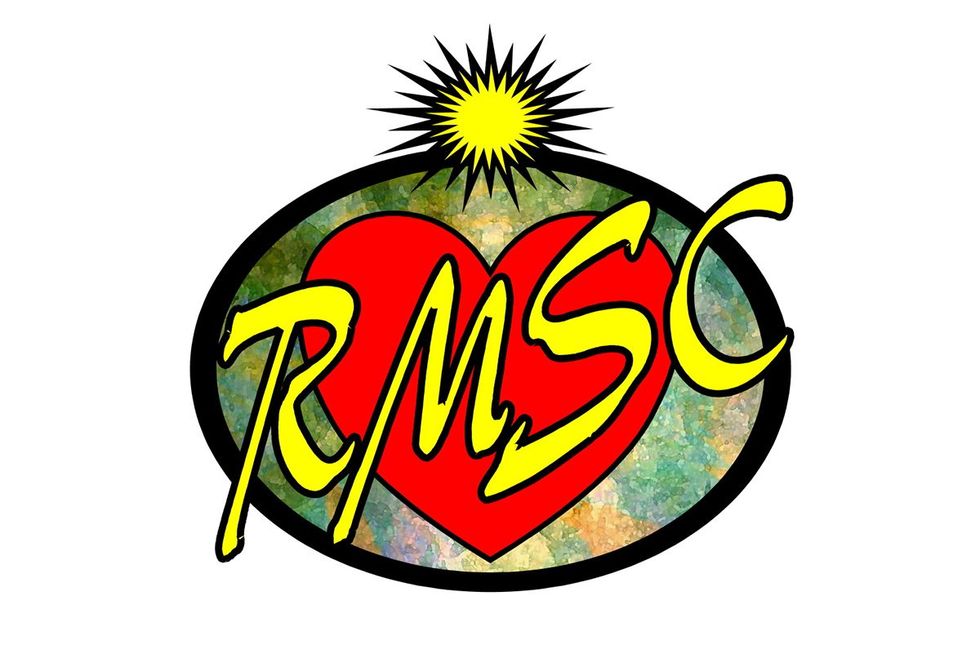
Learn More! rockymountainslides.com
Ashdown Launches UK-Built Cabinets and Amps
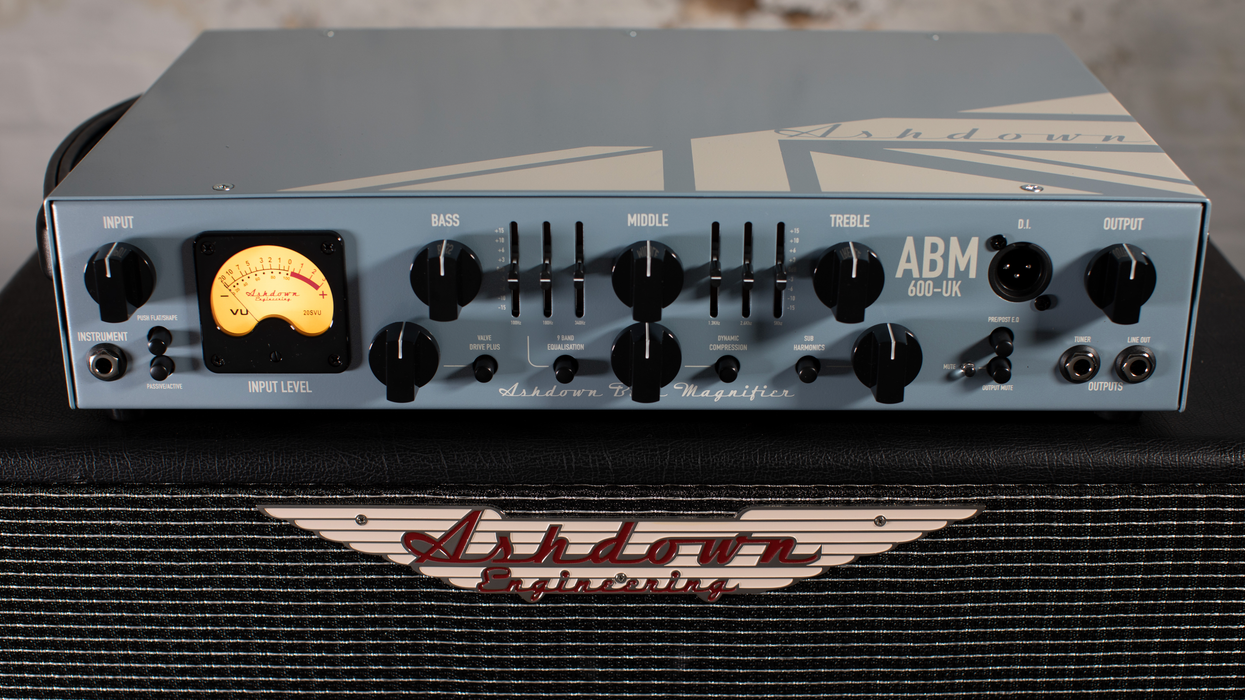
Ashdown Engineering has launched new amp and cabinet models to its flagship ABM range, now available in fully UK-built editions.
For over 25 years, the Ashdown ABM series has earned its place on some of the world’s biggest stage, trusted by professional bass players for its signature tone, flexibility, and reliability.
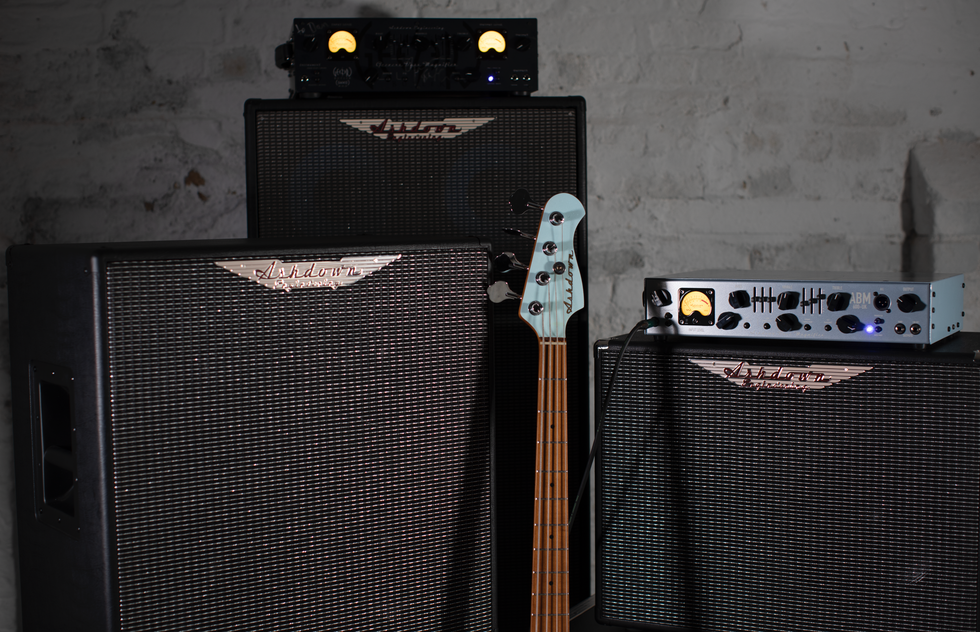
The new amps include the UK-ABM-300-EVO IV and UK-ABM-600-EVO IV. The cabinets include five newly re-engineered cabinets blending iconic ABM tone with state-of-the-art materials and superior construction, crafted entirely in the UK. The five models include the UK-ABM-810H-EVO IV, UK-ABM-410H-EVO IV, UK-ABM-210H-EVO IV, UK-ABM-115H-EVO IV and UK-ABM-112H-EVO IV.
Here are details on the two new amps. Delivering 300 watts of pure bass power, the UK-ABM-300-EVO IV combines heritage tone with modern control. Its class-leading preamp features the Variable Valve Drive Plus, giving players access to a broad tonal spectrum, from warm cleans to gritty overdrive, all foot-switchable for performance versatility. A brand-new 9-band EQ offers pinpoint tonal shaping, while the One Knob Compressor and Sub-Harmonic Generator ensure your bass remains rich, tight, and stage-ready. Professional connectivity, including FX loop, Line Input, and tuner out, make it a complete solution for live and studio applications.
For players demanding more headroom and authority, the Uk-ABM-600-EVO IV offers 600 watts of commanding power while retaining the full feature set of its 300W sibling. The enhanced 9-band EQ, signature VU meter, and foot-switchable controls for Valve Drive, Compression, EQ, and Sub-Harmonics allow seamless integration into any performance setup. Built for the modern bassist yet faithful to its roots, the UK-ABM-600-EVO IV represents the pinnacle of Ashdown’s amplifier design.
Amp specifications are as follows:
UK-ABM-300-EVO IV –
- Power Output - 300 Watt
- Speaker Outputs - 2 x Neutrick Jack/Speakon outputs
- Includes DI output, effects send and return
- Impedance - Minimum 4 Ohms
- Pre Amp Tubes - 1 x 12AX7
- H x W x D (mm) - 146 x 488 x 336
- Weight (kg) - 12.5
UK-ABM-600-EVO IV –
- Power Output - 600 Watts
- Speaker Outputs - 2 x Jack/Speakon outputs
- Includes DI output, effects send and return
- H x W x D (mm) - 146 x 489 x 336
- Weight (kg) - 12.5
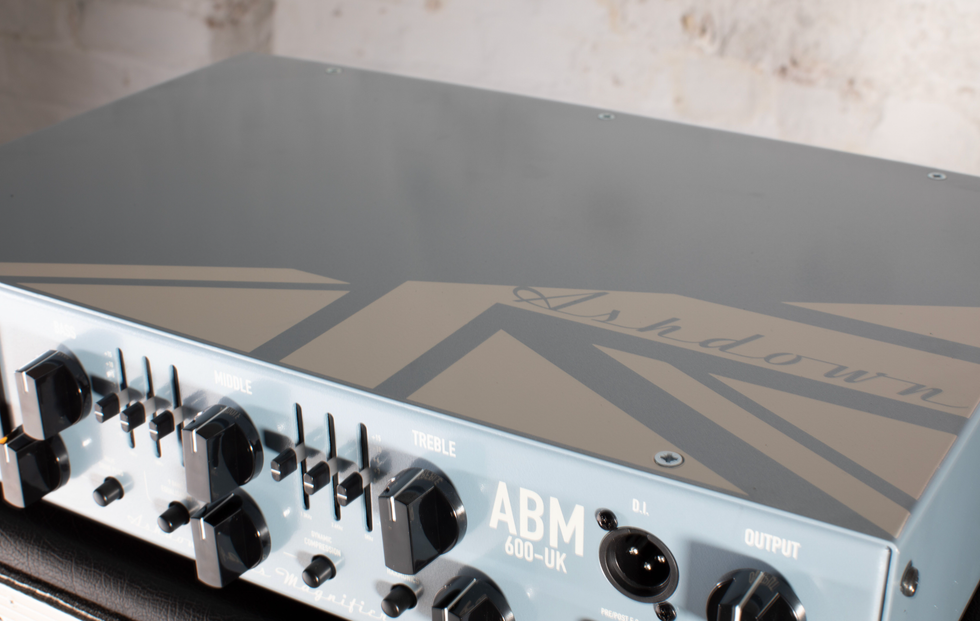
Here are details on the new line of cabinets.
- UK-ABM-810H- EVO IV, a powerhouse cabinet designed for commanding the largest of stages. Loaded with eight precision 10” ceramic drivers arranged in sealed chamber pairs, the UK-ABM-810H-EVO IV offers unmatched punch and midrange articulation. With a massive 2000W AES power handling and a switchable high-frequency horn, this is a cabinet built to deliver, night after night.
- UK-ABM-410H-EVO IV – A studio and stage staple worldwide, delivering tight response and 1000W AES of focused clarity from four 10” ceramic drivers.
- UK-ABM-210H-EVO IV – Half the size, all the tone. Ideal for smaller gigs or pairing with additional cabs, offering 500W AES.
- UK-ABM-115H-EVO IV – A 500W AES 15” cabinet for players who crave classic warmth and depth.
- UK-ABM-112H-EVO IV – Compact yet mighty, the new 300W AES 12” format is meticulously balanced and is already being heralded as the go-to cab for the range.
All cabinets feature genuine Neutrik Speakon connectors, are rear-ported for enhanced low-end performance, and are constructed from FSC-certified Mahogany plywood (or Latvian Baltic birch for the UK-ABM-810H-EVO IV) for unrivalled resonance and durability.
Cabinet specifications are as follows.
UK-ABM-112H-EVO IV
- AES Power – 300W
- Drivers – 1x12”
- Sensitivity – 98dB
- Impedance – 8 Ohms
- Magnet – Ceramic
- Dimensions (W x H x D) – 603 x 452 x 340 mm
UK-ABM-115H-EVO IV
- AES Power – 500W
- Drivers – 1x15”
- Sensitivity – 98dB
- Impedance – 8 Ohms
- Magnet – Ceramic
- Dimensions (W x H x D) - 603 x 452 x 340 mm
UK-ABM-210H-EVO IV
- AES Power – 500W
- Drivers – 2x10”
- Sensitivity – 99dB
- Impedance – 8 Ohms
- Magnet – Ceramic
- Dimensions (W x H x D) - 603 x 452 x 340 mm
UK-ABM-410H-EVO IV
- AES Power – 1000W
- Drivers – 4x10”
- Sensitivity – 102dB
- Impedance – 8 Ohms
- Magnet – Ceramic
- Dimensions (W x H x D) - 603 x 603 x 340 mm
UK-ABM-810H-EVO IV
- AES Power – 2000W
- Drivers – 8x10”
- Sensitivity – 105dB
- Impedance – 4 Ohms
- Magnet – Ceramic
- Dimensions (W x H x D) - 609 x 1150 x 415 mm
Hand-assembled at Ashdown’s UK headquarters in Essex, these amps and cabinets represent a renewed dedication to in-house engineering and local manufacturing. Every UK-ABM-EVO IV head is crafted with the same passion and precision that has defined Ashdown for decades.
For more information, visit: www.ashdownmusic.co.uk
Kirk Hammett says Tony Iommi uses “smart chords” – this is what he means

Over the years, Metallica and Black Sabbath have shared many stages; the heavy metal unit performed at Sabbath’s grand Back To The Beginning gig back in July, but they’d previously opened for Ozzy Osbourne back in 1986, while bassist Robert Trujillo was also an official member of The Prince of Darkness’s band between 1996 until 2003.
However, no matter how many times they performed together, Metallica never stopped being stunned by the talent within the Sabbath ranks. In episode 112 of The Metallica Report, Trujillo reflects on the unique style of each member of the band. “Take Bill Ward, for instance, as a drummer,” he says. “He’s so unique in his style of playing and that swing that he has, it reminds me of big band music… [Then there was] Ozzy with his very bluesy, soulful style of singing.”
He then points to guitar legend Tony Iommi and his own brand of ‘smart chords’. “His chords are – well, Kirk Hammett calls them smart chords,” he explains. “[They’re] basically jazz chords, which he incorporates into the riffs.”
Of course, Iommi’s style is partially the result of an injury he suffered as a 17 year old. Ever since slicing the tips of his fingers off at a factory job, he’s had to adjust his style, now playing with artificial leather fingertips. “Even just the fact that his fingers are different… it creates a certain sound, a certain riff,” Trujillo explains.
Elsewhere in the chat, Trujillo recalls how Ozzy’s wife, Sharon Osbourne, had initially labelled the band as an “alternative” act. “It was so different from anything that was happening back then,” the bassist says. “And there’s a lot of reasons for that… A lot of [their music] is just very unique, very soulful.”
Reflecting on Sabbath’s Back To The Beginning gig, Trujillo recalls it as being yet another reminder of why Black Sabbath are the crème de la crème of heavy metal. “They were soundchecking, and Ozzy wasn’t even on stage yet… but just hearing them warm up, it was another level,” he says.
“This is like Muhammad Ali [hitting] the speed bag – it’s that intense. It’s crazy… they’re just warming up – drum fills, some tribal beats Bill was doing, and you hear Geezer Butler [bassist] kind of noodling a bit. And then Tony [plays] some kind of chords here and there.”
He recalls watching the band run through Into The Void, a track that Anthrax would instead perform during the final show. A few members of the supporting bands watched the performance – and it was pretty emotional. “We just started headbanging, and we were all smiling… but some people were crying,” he notes. “It was so beautiful, and it was a powerful moment. Anybody that witnessed it, that’s something that they’ll probably remember for the rest of their lives.”
The post Kirk Hammett says Tony Iommi uses “smart chords” – this is what he means appeared first on Guitar.com | All Things Guitar.
“To me, progressive rock is very serious players who can really do their stuff”: David Gilmour “never thought Pink Floyd were prog rock

A conversation about prog rock titans is hardly complete without mention of Pink Floyd. But as David Gilmour explains in a recent interview with Rick Beato, he was never keen on the label.
He says that he and his bandmates “never talked about style”, and that they were creating the music they were creating “long before” the ‘progressive rock’ moniker came around.
“I’ve never talked about progressive rock, or thought that we were – whatever – progressive rock,” Gilmour tells Beato [via Louder Sound]. “To me, progressive rock is very, very serious players who can really do their stuff.”
“I think we were doing it long before the term ‘progressive rock’, and I think I was probably a grumpy old man in my 20s. You know, sort of, ‘Nah, that’s not us.’”
He concludes: “The whole idea of labelling – it’s become more essential in this day and age. But I’m not keen on it.”
Arguably, the genres by which certain bands are described are done so by fans, while artists both old and new prefer not to pigeonhole themselves as purveyors of one style of music only.
Regardless of Gilmour’s position on the ‘prog rock’ moniker, Pink Floyd are widely considered to have been behind some of the best prog albums of all time, including The Dark Side of the Moon, The Wall, and Wish You Were Here.
In other news, David Gilmour recently explained why he’s “never learned” the classic Pink Floyd guitar solo in Comfortably Numb.
“To me it’s just different every time,” he said. “Why would I want to do it the same? Would it be more popular with the people listening if I did it exactly like the record? Or do they prefer that I just wander off into whatever feels like the right thing at the time? I don’t know. I suspect they prefer it to be real, and to be happening, you know?”
The post “To me, progressive rock is very serious players who can really do their stuff”: David Gilmour “never thought Pink Floyd were prog rock appeared first on Guitar.com | All Things Guitar.
“The most important thing is to be able to hear something and play it”: Tim Henson on the importance of learning guitar by ear

What’s the most efficient way to become a better guitar player? Is it endlessly practicing scales and music theory? That certainly doesn’t hurt, but according to Polyphia guitar maestro Tim Henson, all guitarists should seek to learn as much as they can by ear.
While theory is no doubt important – and will help you better understand why certain note patterns and chord progressions work together – Henson says there’s a certain value to “learning everything you can by ear”.
- READ MORE: Strandberg launches N2 – the “most significant evolution” of its Boden headless guitars yet
“I started playing violin,” he tells The Music Zoo in a new interview [via Guitar World]. “Before I started playing guitar, I started playing at the age of three. I can sight-read violin pretty well.”
However, he says he learned to play guitar by ear, partly because “violin was so rigid, and it killed any sort of love for music”.
“It made me hate music,” he says. “Especially in classical music, you’re essentially just doing cover songs all the time. There’s no room for creativity. And when I picked up the guitar at 10, I saw it as an escape from that.”
Polyphia’s music is some of the most technically complex in the game, so for many guitarists, resorting to the tablature is a must. But Tim Henson says they should learn as much as they can by ear before checking the official tabs for accuracy.
“We sell our tablature,” he says. “It’s one of the things that helps us pay our bills, and I think it’s a great tool and a great helper. But for the young guitar players who want to play guitar, learn it by ear. Just learn everything that you can by ear.
“And if you want to get the tab afterwards to double check and maybe, if there’s something that you were struggling with that you couldn’t just quite get, sure, do it, but learn it by ear. That is going to be the most important thing for any musician is to just be able to hear it and to play it.”
The extent to which guitarists should know theory has long been a subject of debate. While most don’t discount the usefulness of theory entirely – some say it’s not necessary to make high-quality art.
Earlier this year, former All That Remains guitarist Jason Richardson said it’s not essential, explaining: “Remember, it’s called music ‘theory,’ not ‘law’.” And YouTuber Become the Knight explained how “you can have these tools in your tool belt and still make pretty mediocre art”.
A big advocate of knowing your theory, though, is jazz-funk maestro Cory Wong, who earlier this year slammed guitarists who don’t know every note on the guitar’s fretboard.
The post “The most important thing is to be able to hear something and play it”: Tim Henson on the importance of learning guitar by ear appeared first on Guitar.com | All Things Guitar.
Strandberg launches N2 – the “most significant evolution” of its Boden headless guitars yet

Strandberg has lifted the lid on N2, its new generation of headless guitars which represents its “most significant evolution yet”.
The N2 line debuts with two new models: the Boden N2 Original and Boden N2 Standard, both sporting an all-new arched body design, which brings the guitar closer to the player “for an even more comfortable and connected experience”.
- READ MORE: EarthQuaker Devices Easy Listening review – can an amp simulator this simple actually sound good?
Specs found on both models also include EGS Arc hardware – a full-body contact bridge system which maximises resonance and sustain while simplifying setup and maintenance – and a titanium-reinforced EndurNeck, with dual titanium rods for “unmatched stability, resonance and clarity across every register.
In terms of electronics, the Boden Original N2 is fitted with Strandberg’s POWR:D pickups – developed in partnership with Fishman. These deliver “distinct voicings for ultimate versatility: from fluid modern distortion to classic crunch and shimmering cleans”.
Meanwhile the Boden Standard N2 is loaded with Seymour Duncan Pegasus/Sentient pickups, offering “tight, punchy and balanced tones that adapt seamlessly from heavy riffs to pristine textures”.
Elsewhere, the Boden Original N2 features a chambered swamp ash body with a flame maple veneer – and comes in Black Denim Burst Satin and Sunset Coral Burst Satin – while the Boden Standard N2 sports a solid basswood body, and roasted maple neck and fretboard, and comes in Black Satin Metallic and Transformative Teal Metallic.
“With the N2, we’ve created the most refined Strandberg to date. It’s designed to feel like an effortless extension of the player’s creativity,” says Founder and Creative Lead Ola Strandberg.
“Every detail, from the arched body and titanium-reinforced neck to the new hardware and pickups, reflects our vision of building instruments that truly inspire musicians.”
Both the Boden Original N2 and Boden Standard N2 are available now in six-, seven- and eight-string versions. For more info, head to Strandberg.
 Credit: Strandberg
Credit: Strandberg
The post Strandberg launches N2 – the “most significant evolution” of its Boden headless guitars yet appeared first on Guitar.com | All Things Guitar.
EarthQuaker Devices Easy Listening review – can an amp simulator this simple actually sound good?

$99/£115, earthquakerdevices.com
Maybe modern life really is just too complicated. Annoyed that your five favourite TV shows are on five different streaming services? Exasperated that there’s an app for everything even if it doesn’t need one? Bemused by the complex control arrays and secondary functions of digital amp simulators? The EarthQuaker Devices Easy Listening is here to help… well, with that last one anyway.
- READ MORE: Walrus Audio Mako Series MkII ACS1 review: “this is as good as digital amp and cab simulators get”
Fully analogue and fuss-free, this one-knob wonder is designed to make it as easy as possible for you to enjoy playing the electric guitar – with or without effects pedals – in silence. And considering it’s made in the USA, it’s as cheap as it is straightforward.
EarthQuaker Devices Easy Listening – what is it?
Is a pedal even a pedal if it doesn’t have a footswitch? That’s the level of simplicity we’re dealing with here: power it up, plug a guitar in on the right and some headphones on the left, then turn it up to one notch shy of permanent hearing damage – congratulations, you have now explored the full functionality of the Easy Listening.
Tonally it’s based on the legendary Fender Deluxe Reverb, so that should mean plenty of top-end chime and a sweetly scooped midrange. Will it also mean a lovely bit of crunch when you crank it? Nope, because there’s no crank to crank: that single control is for output level, not input gain, and we’re promised lots of headroom to ensure it’ll stay clean and take pedals without getting squishy.
The output is a proper quarter-inch type, and this can also be fed to an audio interface for direct recording. It’s TRS so you could even send it to two channels, though as this is a mono device that’s not exactly a major selling point.
 Image: Press
Image: Press
EarthQuaker Devices Easy Listening – what does it sound like?
In a sense, the words ‘pure’ and ‘basic’ mean the same thing… but with very different connotations. So yes, the fixed tone of the Easy Listening is pure – it’s clean and bright in classic black-panel Fender style, with a nicely rounded bottom end – but it’s undeniably a little bit basic too.
Maybe a better word is ‘unrefined’: natural compression is a key feature of small amps like the Deluxe Reverb, but here the dynamics are left wide open – which might be why you still get a hint of the dreaded plasticky DI ‘slap’ when you attack a note or chord. This is most noticeable with bridge humbuckers, which can sound alarmingly raw. The good news is, adding dirt pedals definitely helps – and all that headroom does indeed offer a giant playground for them to run around in. Overdrives that prefer some amp gain to work with might feel somewhat exposed here, but it’s a reliably blank canvas for everything else.
As for recording… well, I wouldn’t use it for anything important, but my test tracks ended up sounding quite respectable with a bit of software compression and reverb plus a slight EQ dip around the 2.5kHz mark. A decent result, then, but don’t throw away your favourite digital amp sim just yet – sometimes it’s good to be complicated.
EarthQuaker Devices Easy Listening – should I buy it?
Be warned: there’s much more to a good amplifier than EQ filtering, so a simulator as stripped-back as this is never going to get you the whole amp experience. But the Easy Listening is pitched as a handy little practice gadget – albeit one with solid made-in-America pedigree – and that’s exactly what you’re getting.
EarthQuaker Devices Easy Listening alternatives
Most modern amp sims are very much digital affairs, but there is a powerful analogue contender in the DSM & Humboldt Simplifier MkII ($359/£349) – and an old-school survivor in the battery-powered Electro-Harmonix Headphone Amp ($52.60), which presumably only exists because they forgot to discontinue it.
The post EarthQuaker Devices Easy Listening review – can an amp simulator this simple actually sound good? appeared first on Guitar.com | All Things Guitar.
Stompbox Offers Early 90's Ultra Gain Tones
12 Stompbox Tones In One Plug-In
Gear Finds: Pickups and Guitar Upgrades
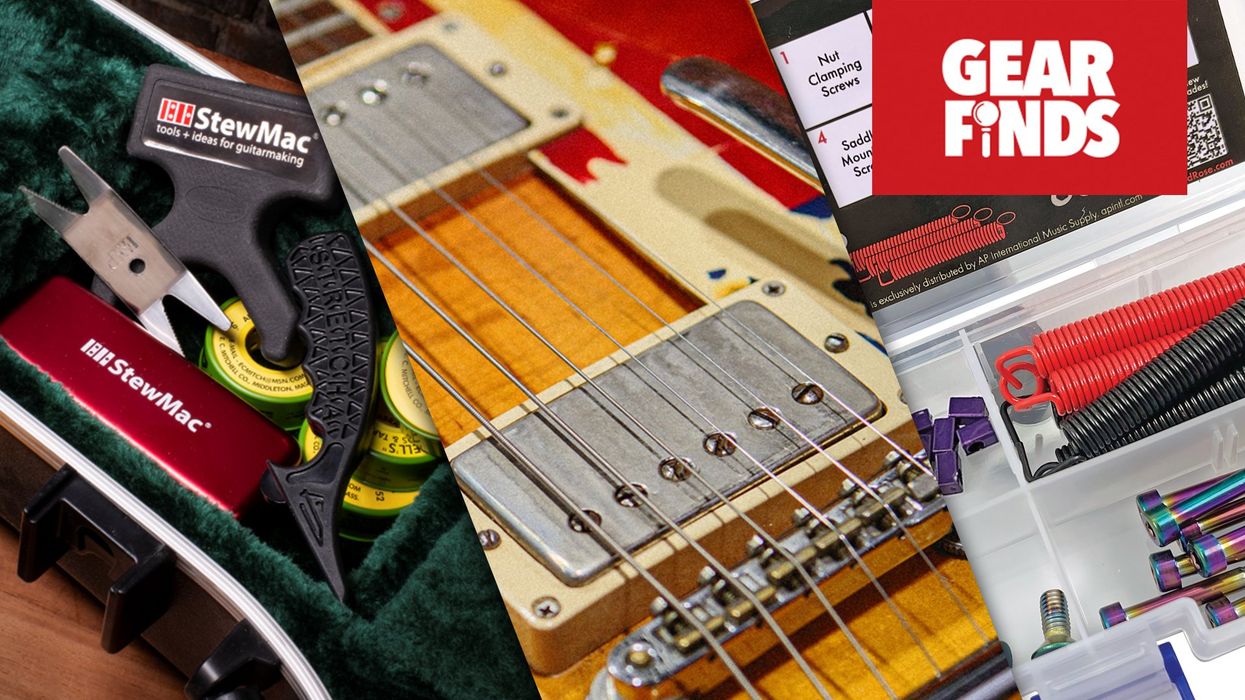
Unlock your guitar's true potential with the Fralin Pickups Push-Pull Blender Pot! Blend tones, split coils, and explore endless sonic possibilities without permanent changes. Ready to elevate your sound? Check out the Joe Bonamassa Humbucker Set and more gear to keep your music alive!
Fralin Pickups
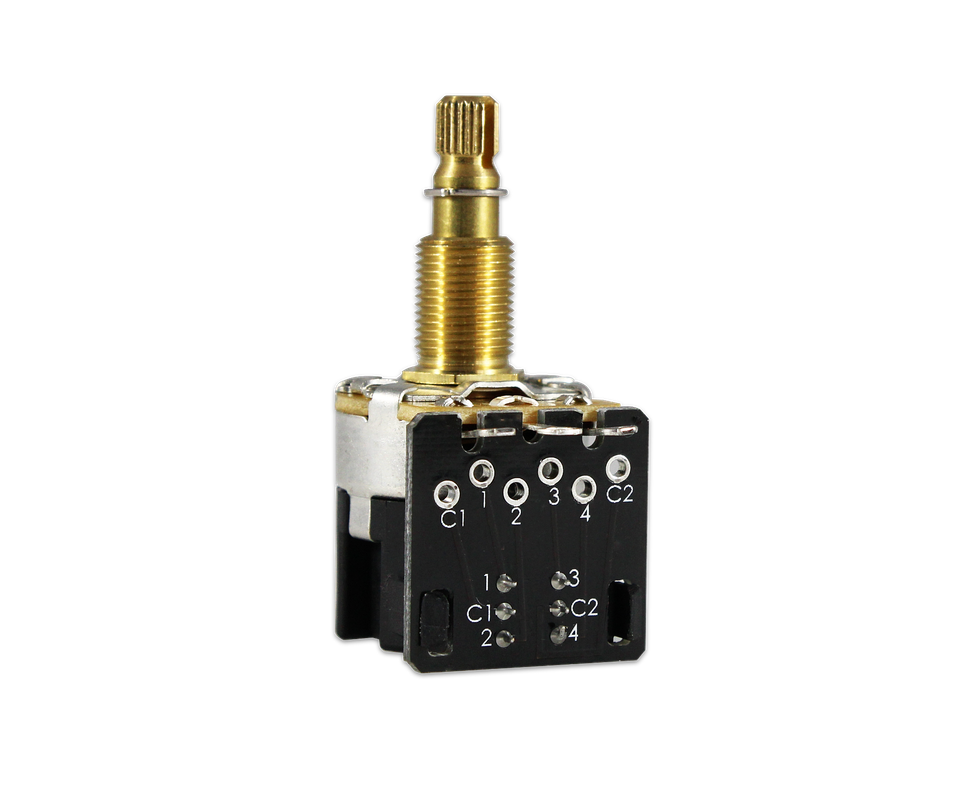
Push Pull Blender Pot
Unlock a wider range of tones with the Fralin Pickups Push-Pull Blender Pot. Compatible with guitars and basses, this versatile control blends pickup outputs, adds coil-splitting and out-of-phase options, and enables many wiring mods—giving you flexible, player-friendly tonal shaping without permanent changes to your instrument.
$25 street
Graph Tech
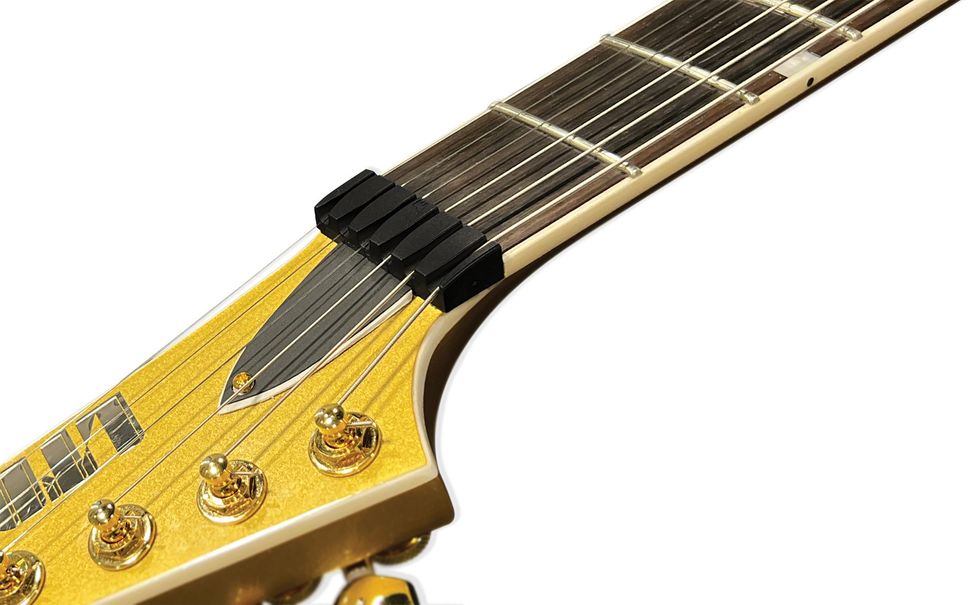
Un-Lock Nut
Unlock your nut and release the beast!
$35 street
Seymour Duncan
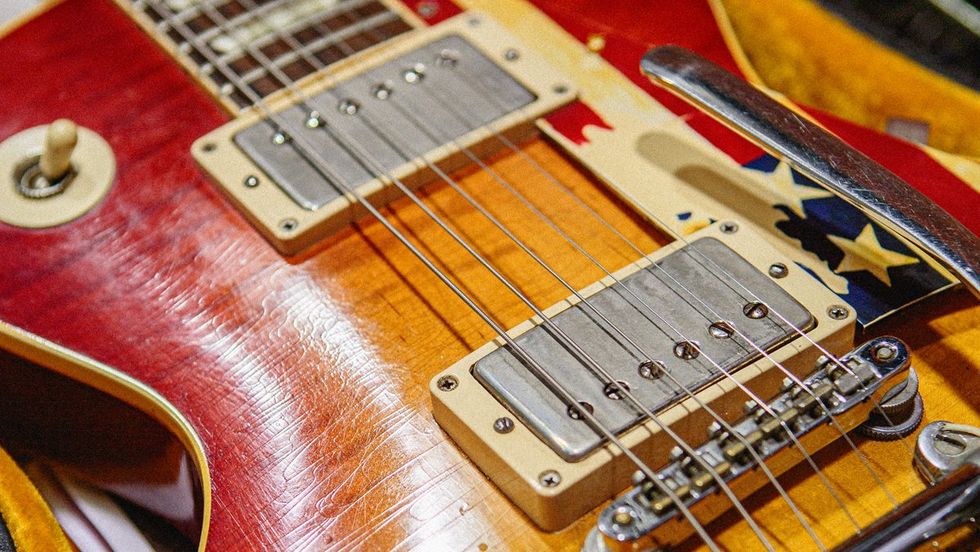
The Joe Bonamassa “Bolin Burst” Humbucker Set
Joe Bonamassa has long been a fan of Tommy Bolin, whose work influenced generations of guitarists. After a 10-year search, Joe acquired Tommy’s 1960 Gibson Les Paul and worked with the Seymour Duncan Custom Shop to recreate these P.A.F.s. The first 500 sets are signed by Joe and Seymour Duncan.
$375 street
StewMac
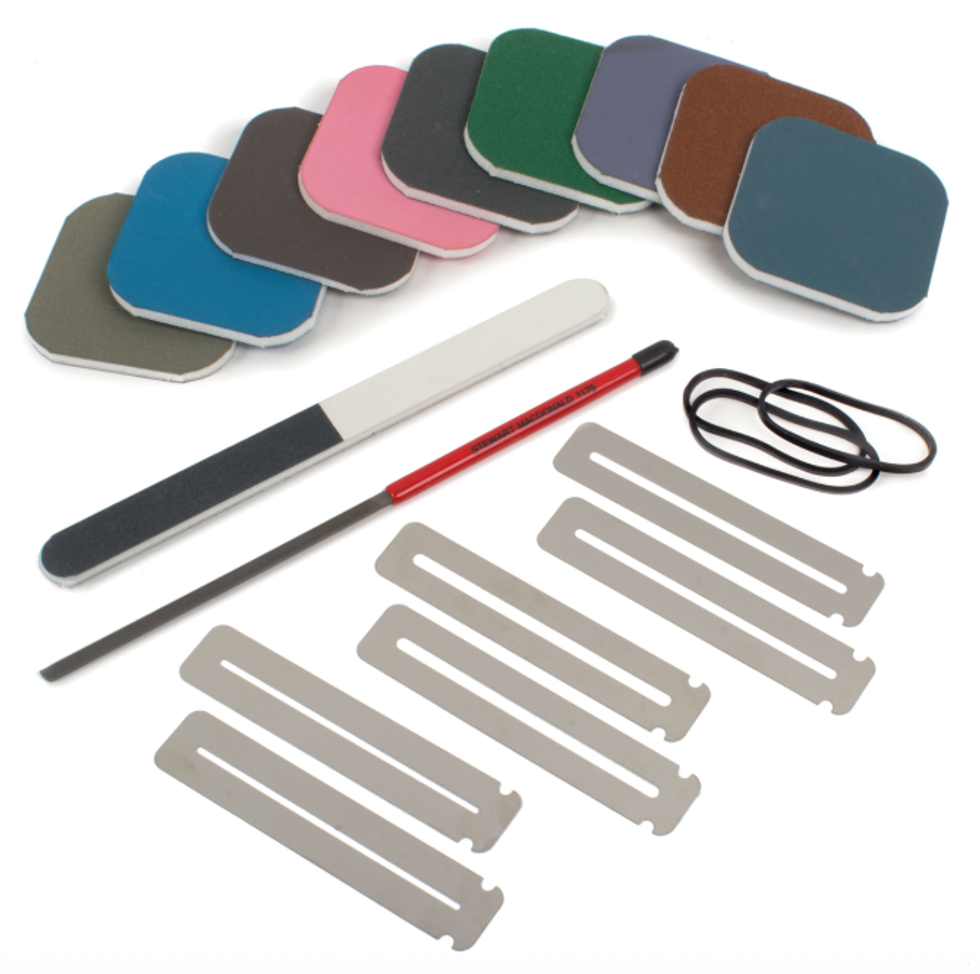
Rough Fret Smooth + Shine Set
Don’t let fret sprout stop you from playing your favorite guitar. This kit has everything you need to fix it yourself. When dry weather comes around, your fretboard can shrink and the fret ends poke out. Sharp fret ends can slow you down, feel uncomfortable, or cut your hand.
$69 street
StewMac
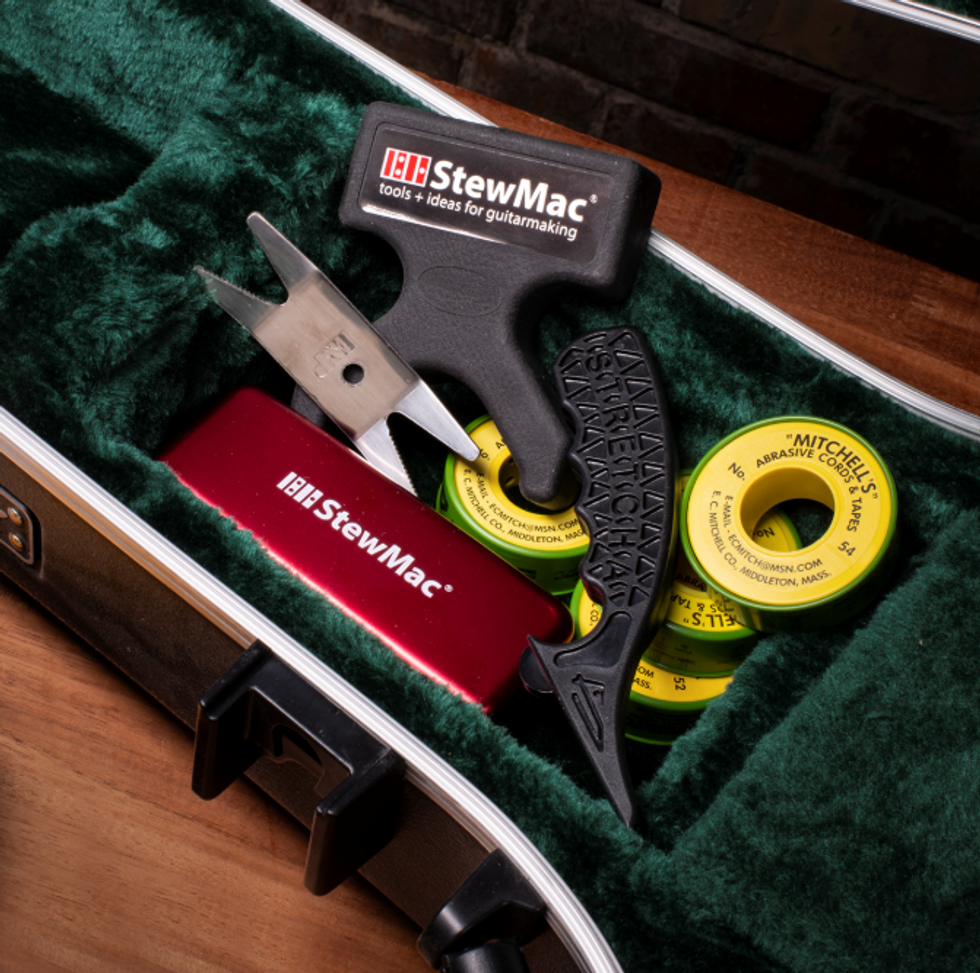
StewMac Guitar Tech Case Candy Set
When performing live, the small problems can turn a great show into a nightmare. A loose screw, slipping string, or guitar poorly leaned against an amp can create major stress. So, we created the Guitar Tech Case Candy Set—a compact collection of essential tools designed to keep your guitar stage-ready.
$140 street
stewmac.comFloyd Rose
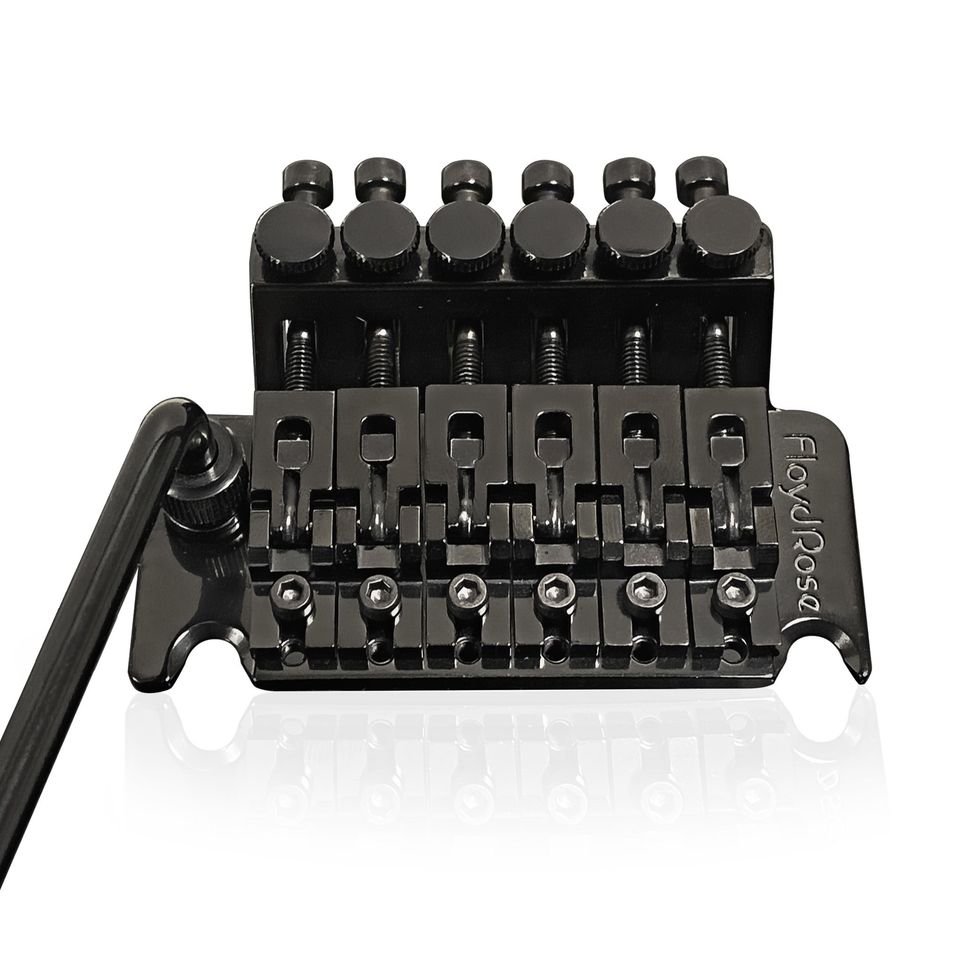
USA Original Radius Saddle Sets
Designed for matching specific fretboard curvatures, Floyd Rose Original saddle sets now offer several radius options without the need for individual saddle shims. Crafted in the U.S. from high-quality tool steel using precision CNC machining, the saddles are then heat-treated and plated to withstand the demands of the heaviest performers.
$110 street
Floyd Rose
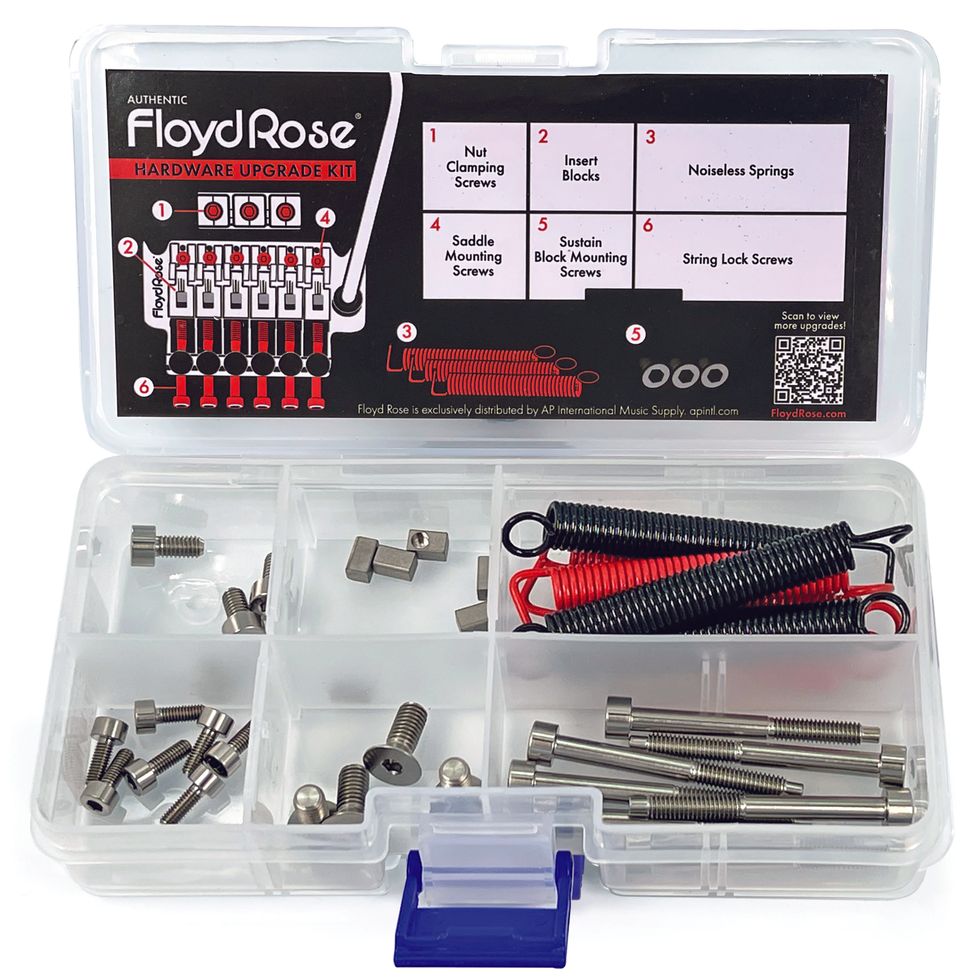
Hardware Upgrade Kits
Introducing authentic upgradable hardware kits for FR Tremolo Systems, available in eight stainless steel finishes as well as titanium. Each hardware upgrade kit comes with seven string-lock screws, seven saddle-mounting screws, four nut-clamping screws, four block mounting screws, and string lock insert blocks.
$63 street
Check Out This Pristine 1959 Les Paul Custom
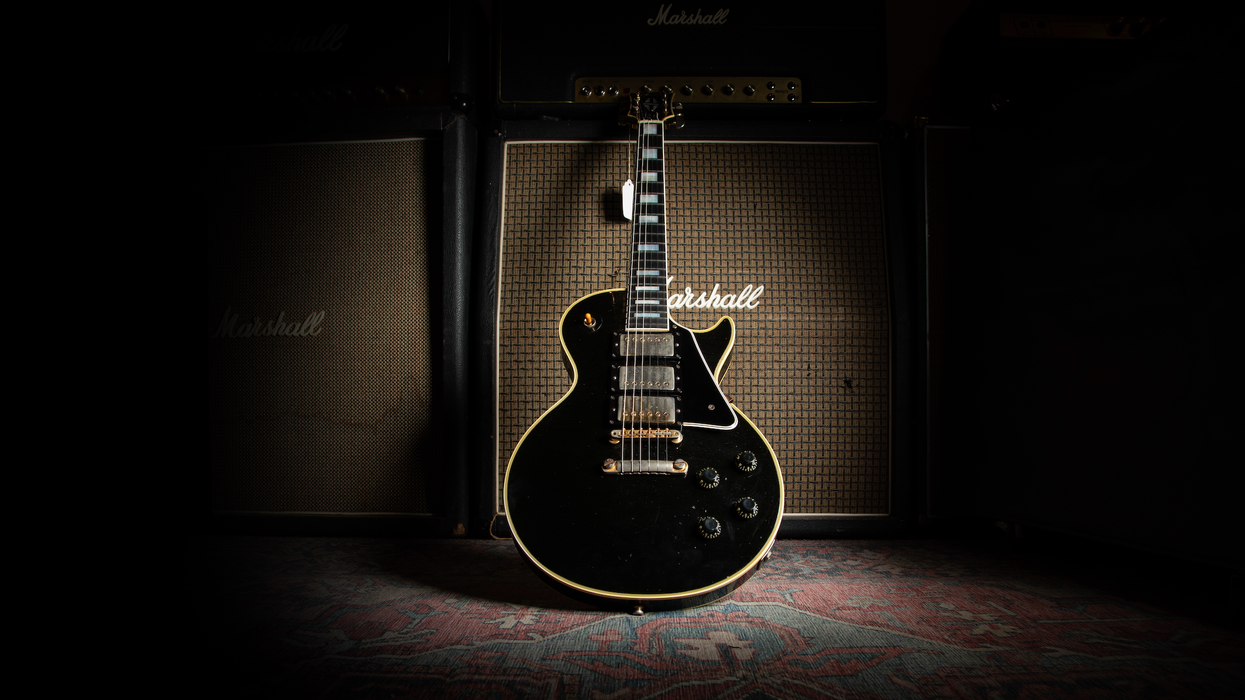
It’s been a minute since we’ve gotten to share something truly special with you all, and today’s subject is one of the finest: a 1959 Gibson Les Paul Custom.
Gibson introduced the first Les Paul Customs in late 1953, following a couple of prototypes built for Les Paul a year earlier. Les wanted what he called a “more elegant” version of the Les Paul Standard, something that looked sharp on the booming new medium of television. His request was specific: a black guitar with refined appointments and design tweaks to match his playing style.
The original Customs carried two pickups: an alnico “staple” single-coil in the neck and a P-90 in the bridge. They featured black finishes, white binding, gold hardware, and the split-diamond headstock inlay we now associate with the model. The headstock was slightly larger than the Standard’s, and the carve at the scarf joint was lengthened for easier play near the nut.
Perhaps the most distinctive feature was the fretwork. Les requested low, wide frets, which led to the nickname the “Fretless Wonder.” While iconic, these frets can feel unusual to modern players. Still, Les’ highly developed technique probably made frets almost unnecessary for him. Another major innovation appeared on the Custom: the debut of the ABR-1 Tune-o-matic bridge, finally giving players accurate intonation adjustment.
Here’s an interesting twist in the Custom’s story. Les’ original vision called for the Standard to be built from solid mahogany with a gold-painted top, and the Custom to use a maple cap on mahogany, finished in black or white. Gibson flipped those specs. The production Standard ended up with a maple cap, while the Custom was built entirely of mahogany.
The all-mahogany build gave the Custom a darker sound, so Gibson used an ebony fretboard to restore some brightness. Meanwhile, the maple-topped Standard was paired with a warmer Brazilian rosewood ’board. Ironically, it wasn’t until 1968 that the Custom attained the maple top Les had wanted all along.
“Instruments like this inspire players across generations.”
The next major leap came in 1957, when Gibson introduced Seth Lover’s groundbreaking humbucking pickups. By mid-year, the Les Paul Custom carried not two but three humbuckers. This gave players a wide tonal palette spanning jazz, pop, country, blues, and eventually rock. In time, artists like Keith Richards and Jimmy Page made unforgettable recordings on Customs, further cementing the model’s place in music history.
That brings us to the stunning 1959 Les Paul Custom currently here at Carter Vintage. I had the chance to spend a morning with it, and it’s easily one of the best-playing guitars in the shop.
Remember my earlier complaint about the “Fretless Wonder” frets? This one has been given a perfect refret by our repair shop. The result is transformative. Suddenly the Custom plays effortlessly, like a hot knife through butter. The setup is dialed in to perfection, and honestly, I walked away a little jealous. It convinced me that a couple of my own guitars need some attention from our techs.
Plugged into a Deluxe Reverb, the guitar absolutely sang. The original PAF pickups deliver remarkable clarity and punch. There’s excellent balance between the bridge and neck, and the middle position, often prone to phase issues, sounds smooth and full-on. Perfect for bluesy bends or country runs.
The neck deserves its own praise. It’s the quintessential ’59 carve: not too big, not too thin, with shoulders that make it feel more manageable than its actual measurements (.89" at the nut, 1.01" at the 12th fret) suggest. Simply put, it’s a neck that disappears in your hands, feeling comfortable, fast, and inspiring.
This particular Custom has been thoughtfully maintained. Aside from the refret and a new nut, the electronics and pickups remain untouched, and the finish is all original and in excellent condition. At about 9.5 pounds, it’s substantial, but its balance makes it feel lighter than the number on the scale suggests.
The Les Paul Custom has always been a guitar steeped in history. Born from Les Paul’s vision, refined by Gibson’s innovations, it was carried into legend by the players who made it sing. This 1959 example embodies all of that and more. With its perfect refret, killer PAFs, and ideal ’59 neck, it’s a joy to play and living proof of why this model continues to hold such a revered place in guitar history.
For me, it wasn’t just another morning with a guitar—it was a reminder of why instruments like this inspire players across generations.
Written with help from Andrew White.

